- Media & Industry
- Meetings & Events
- Select Language 简体中文 繁體中文(香港) 繁體中文(臺灣) India (English) Bahasa Indonesia 한국어 ภาษาไทย Tiếng Việt Singapore (English) Philippines (English) Malaysia (English) Australia/New Zealand (English) Français Deutsch Italiano Español United Kingdom (English) Nordic countries(English) Canada (English) Canada (Français) United States (English) Mexico (español) Português العربية Japan(日本語) Global (English)
- India (English)
- Bahasa Indonesia
- Singapore (English)
- Philippines (English)
- Malaysia (English)
- Australia/New Zealand (English)
- United Kingdom (English)
- Nordic countries(English)
- Canada (English)
- Canada (Français)
- United States (English)
- Mexico (español)
- Global (English)
- Fujiyoshida
- Shimonoseki
- Ishigaki Island
- Miyako Island
- Kerama Island
- Tokyo Island
- Koka & Shigaraki
- Hida Takayama
- Ginza, Nihonbashi
- Beppu & Yufuin (Onsen)
- Ginzan Onsen
- Nagasaki Islands

- Kumano Kodo
- Shikoku Karst
- Amami Oshima
- Hachimantai
- Omihachiman
- Aizuwakamatsu

- Diving in Japan
- Skiing in Japan
- Seasonal Flowers in Japan
- Sustainable Outdoors
- Off the Beaten Track in Japan
- Scenic Spots
- World Heritage
- Home Stays & Farm Stays

- Japanese Gardens
- Japanese Crafts
- Temple Stays
- Heritage Stays
- Festivals and Events
- Theater in Japan
- Japanese Tea Ceremony
- Cultural Experiences in Japan
- Culture in Japan

- Local Cuisine Eastern Japan
- Local Cuisine Western Japan
- Local Street Food
- Japan's Local Ekiben
- Japanese Whisky
- Vegetarian and Vegan Guide
- Sushi in Japan Guide
- Japanese Sake Breweries

- Art Museums
- Architecture
- Performing Arts
- Art Festivals
- Japanese Anime and Comics
- Japanese Ceramics
- Local Crafts

- Scenic Night Views
- Natural Wonders
- Theme Parks
- Samurai & Ninja
- Iconic Architecture

- Wellness Travel in Japan
- Japanese Ryokan Guide
- A Guide to Stargazing in Japan
- Relaxation in Japan
- Forest Bathing (Shinrin-yoku)

- Experiences in Japan
- Enjoy my Japan
- National Parks
- Japan's Local Treasures
- Japan Heritage
- Snow Like No Other
- Wonder Around Japan

- Visa Information
- Getting to Japan
- Airport Access
- COVID-19: Practical Information for Traveling to Japan
- Anime Tourism
- Countryside Stays
- Accessible Tourism
- Hokkaido Great Outdoors
- Scenic World Heritage in Tohoku
- Shikoku’s Nature and Traditions
- Southern Kyushu by Rail

- Traveling by Rail
- How to Travel by Train and Bus
- JR Rail Passes
- Scenic Railways
- Renting a Car
- Sustainable Travel in Japan
- Travel Brochures
- Useful Apps
- Online Reservation Sites
- Eco-friendly Accommodation
- Luxury Accommodations
- Traveling With a Disability
- Hands-free Travel
- How to Book a Certified Tour Guide
- Volunteer Guides
- Tourist Information Center

- Japanese Manners
- Spring in Japan
- Summer in Japan
- Autumn in Japan
- Winter in Japan
- Cherry Blossom Forecast
- Autumn Leaves Forecast

- Japan Visitor Hotline
- Travel Insurance in Japan
- Japan Safe Travel Information
- Accessibility in Japan
- Vegetarian Guide
- Muslim Travelers
- Safety Tips

- JAPAN Monthly Web Magazine
- Arts & Cultures
- Nature & Outdoor
- Festivals & Events
- Insider Blog
- Things to do
- Local Guides
- Food & drink
- Traditional
- Hokuriku Shinetsu

My Favorites
${v.desc | trunc(25)}

Planning a Trip to Japan?
Share your travel photos with us by hashtagging your images with #visitjapanjp
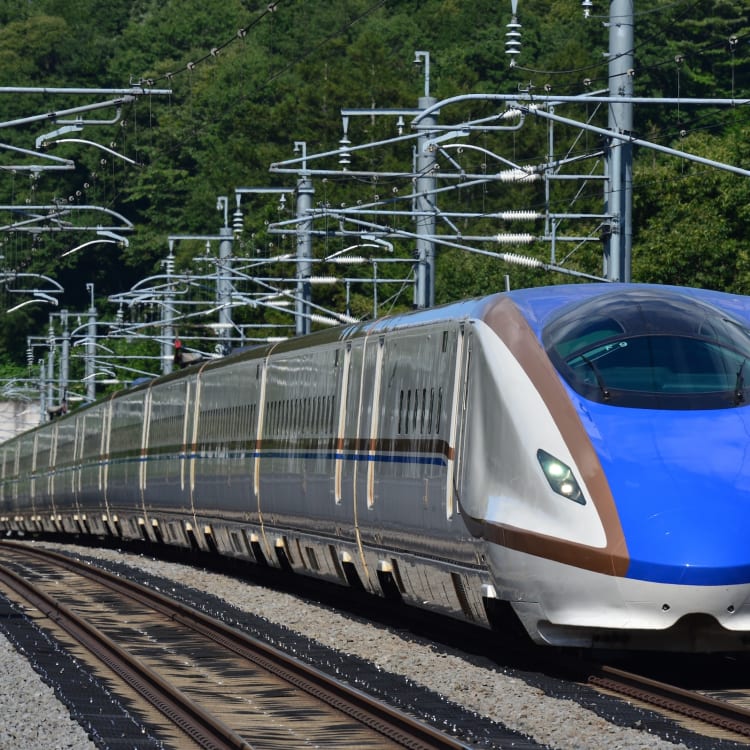
- Shinkansen (Bullet Train)
- Helping You Plan
- Transportation in Japan
Photo copyright: © East Japan Railway Company
Nothing screams "Japan" more loudly than the super sleek shinkansen silently speeding out from the station to all corners of the country.
The world-renowned bullet train offers the highest rail speeds to match its peerless comfort, allowing travelers to travel around the country at regular intervals.
The shinkansen rockets down a number of different routes across Japan.
Hokkaido Shinkansen: links Shin-Aomori with Shin-Hakodate-Hokuto
Tohoku Shinkansen: links Tokyo with Shin-Aomori
Akita Shinkansen: links Tokyo with Akita
Yamagata Shinkansen: links Tokyo with Yamagata
Joetsu Shinkansen: links Tokyo with Niigata
Hokuriku Shinkansen: links Tokyo with Nagano, Kanazawa and Tsuruga (opening March 2024)
Tokaido Shinkansen: links Tokyo with Shin-Yokohama, Nagoya, Kyoto and Shin-Osaka
Sanyo Shinkansen: links Shin-Osaka, Hiroshima and Hakata (Fukuoka Prefecture)
Kyushu Shinkansen: links Hakata (Fukuoka Prefecture) with Kagoshima Chuo (Kagoshima Prefecture)
Nishi Kyushu Shinkansen: links Nagasaki with Takeo-Onsen (Saga Prefecture)
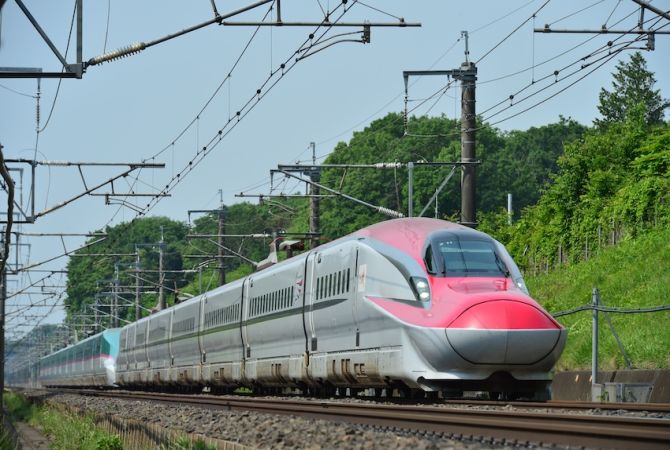
© East Japan Railway Company/© Central Japan Railway Company/© Kyushu Railway Company/© 1976, 2020 SANRIO CO., LTD. APPROVAL NO. L617212
Types of shinkansen
The three typical shinkansen seat types, rail passes, shinkansen tickets, did this information help you.
out of found this information helpful.
Thank you for your feedback.
Recommended for you.
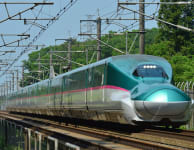
Please Choose Your Language
Browse the JNTO site in one of multiple languages
- Search Please fill out this field.
- Manage Your Subscription
- Give a Gift Subscription
- Newsletters
- Sweepstakes
- Bus and Train Travel
Everything You Need to Know About Japan's Bullet Trains
Here’s what you need to know about Shinkansen pricing, routes, and amenities.
Lindsay Cohn is a writer, editor, and avid traveler who has visited 45 countries across six continents — and counting. She contributes to Travel + Leisure, Hotels Above Par, InsideHook, Well+Good, The Zoe Report, and more.
:max_bytes(150000):strip_icc():format(webp)/Lindsay-Cohn-8b22fb2d452f46f5a256755f4d0f42a5.jpeg)
- Popular Bullet Train Routes
How to Buy Tickets
- What to Know About Rail Passes
- What to Expect on Board
Tips for Traveling on Japanese Bullet Trains
CHARLY TRIBALLEAU/AFP via Getty Images
Japan is known for many things: ancient temples, towering skyscrapers, sushi, and first-class rail service. I’ve had the pleasure of speeding through the Japanese countryside many times, and on my most recent trip this past April, I was yet again reminded why Japan's high-speed trains are world famous.
“The first high-speed rail system, the Tōkaidō Shinkansen, operated by Japan Railways (JR), began operations in Honshu in 1964. Due to the streamlined spitzer-shaped nose cone of the locomotive, the system earned the English nickname ‘the bullet train’” explains Keigo Tachihara, senior concierge at Four Seasons Hotel Tokyo at Marunouchi , a five-star hotel steps from Tokyo Station that offers a complimentary Shinkansen escort service for guests. “Running at speeds of up to 199 miles per hour, the Shinkansen services Japan’s main islands of Honshu, Kyushu, and Hokkaido and is famed for punctuality — most trains depart on time to the second — comfortable, quiet cars with forward-facing seats, safety, and efficiency.” The majority of travelers visiting Japan will arrive in Tokyo , but thanks to the bullet train, it’s super easy and quick to hop around to popular spots such as Kyoto, Osaka, and Kanazawa.
Planning a trip to the Land of the Rising Sun? Scroll on for everything you need to know about the Shinkansen.
Meet the Expert
Keigo Tachihara is a senior concierge at Four Seasons Hotel Tokyo at Marunouchi , a five-star hotel near Tokyo Station.
Popular Bullet Train Routes
The most traveled bullet train line in the country, the Tōkaidō Shinkansen connects Tokyo to Yokohama, Nagoya, Osaka, and Kyoto. The Sanyō Shinkansen connects Osaka (Shin-Osaka Station) with Fukuoka (Hakata Station) on Kyushu and reaches speeds up to 186 miles per hour. It was completed in 1975 as the second Shinkansen line. The Jōetsu Shinkansen connects Tokyo with Niigata. It was opened in 1982 and is operated by the East Japan Railway Company, commonly known as JR East. “It provides tourists with access to hot springs and ski resorts in Gunma and Niigata prefectures,” says Tachihara. Also operated by JR East, the Tōhoku Shinkansen connects Tokyo with Aomori at the northern tip of Honshu. “Sendai, Morioka, and Akita are the most popular stations,” per Tachihara. The Kyushu Shinkansen connects Fukuoka and Kagoshima.
Travelers looking to ride the Tokaido, Sanyo, and Kyushu Shinkansen lines can buy individual tickets online with the SmartEX app (which is available in the United States, Canada, Australia, Singapore, Hong Kong, Malaysia, and Thailand) from one month in advance right up to the departure time of your chosen train. Tachihara advises that the app does seem to have issues with some foreign-issued credit cards. Prices vary depending on route and fare class.
If you’re planning to travel around Japan extensively, it’s worth considering the Japan Rail Pass (also commonly called JR Pass), a nationwide rail pass for train travel in Japan that can be used only by foreign tourists and offers unlimited rides on JR trains.
What to Know About Rail Passes
Japan Rail Passes are available in increments of seven, 14, or 21 days (the validity period is for consecutive dates) and come in two types: ordinary and green car. “The latter is valid on first-class cars, which offer more spacious seats and upgraded amenities.” Passes can be purchased through the Japan Rail Pass train reservation website and at ticket offices throughout Japan. “Kindly note that Nozomi and Mizuho trains on the Tokaido and Sanyo Shinkansen lines are not covered by the Japan Rail Pass, so tickets need to be purchased individually for those,” says Tachihara.
Bernd von Jutrczenka/picture alliance via Getty Images
What to Expect on Board
Fare classes.
Ordinary cars, available on all Shinkansen trains, offer comfortable seats arranged in a three-by-two or two-by-two layout, ample elbow room, and plenty of luggage space. Both reserved and unreserved seating options are available. An upgrade to one of the green cars, the equivalent of first-class, offers even greater comfort with seats arranged in a two-by-two layout and more space. All seats are reserved, for a more streamlined, less crowded experience. Gran Class, which is available on certain trains, provides a luxurious experience with spacious leather seats arranged in a two-by-one layout. “Passengers receive personal attention, an escort to their seat, and complimentary amenities like blankets, warm towels, slippers, and eye masks are handed out,” says Tachihara. “You can also enjoy unlimited food and drinks during the ride on certain lines.”
“The Tokaido Shinkansen has a mobile food order service for green car passengers that allows riders to purchase snacks and beverages onboard by scanning a QR code. Items are then delivered directly to their seats by the onboard host/hostess,” explains Tachihara.
There’s a refreshment wagon that carries snacks, bento, beverages, and souvenirs for ordinary car passengers on Jyoetsu and Hokuriku Shinkansen.
All trains have free Wi-Fi for all passengers, and there are restrooms available on board.
- Like we said, these trains are timely and efficient, and they leave on the dot. Tachihara advises passengers to allocate ample time not only to reach the platform but also to get settled in the correct car.
- While food is sometimes available on board (on certain routes), travelers with food allergies or dietary restrictions should purchase something at the station kiosks before boarding.
- Be sure to check the luggage requirements and limitations when you book; you may need to reserve a specific seat if you have oversized luggage.
- Be mindful of other passengers. Avoid talking on the phone in the train cars, and keep your voice down when chatting with travel companions.
- Traveling on the Tokaido Shinkansen leaving Tokyo? Reserve a right-side window seat for views of Mt. Fuji.
Related Articles
- About Premium Plan
Português
Riding the Shinkansen - What you need to know
NAVITIME TRAVEL EDITOR

Shinkansen - also known as the bullet train - are operated by Japan Railways (JR). Valued for its speed, accuracy on time, comfort, safety and efficiency, the shinkansen can run at speeds of up to 320 km/h, carrying thousands of people across Japan daily. This article will guide you through what you need to know about the shinkansen.

Interior of the shinkansen
When you step inside the shinkansen, it reminds you of an airplane, with rows of seats on both sides of an isle, and windows. The seats all recline, with retractable tables and sometimes power outlets for charging your phone or PC. There is enough room to stretch your legs, and luggage can be stored below or above the seats. Although it travels at a sweeping 320 km/h, the ride is very quiet and comfortable.

Taking the shinkansen
There are many reasons why the shinkansen would be your first choice when traveling across Japan.

Shinkansen stops at many of the large cities across Japan, and most of the time, the stations are located at the center of the cities. Those stations are usually hubs with connections to local lines and subways in the same building or nearby, making it very convinient for travel. One great thing about shinkansen trains are that they are incredibly punctual. Even though the Tokaido shinkansen has over 130,000 journeys a year, it is surprising to know that the average delay is only 24 seconds!

The scenary may be another reason to take the shinkansen. Every shinkansen line have their own unique stunning seashore and mountainous scenery, which will definitely be one of the highlights of the train ride. For example, if you are traveling from Tokyo to Osaka on the Tokaido Shinkansen, make sure to sit on the RIGHT side of the train to see Mt. Fuji.

Train departure board
What is a shinkansen?
By law, trains that travel over 200 km/h is considered a “shinkansen.” To distinguish shinkansen from other trains operated by Japan Railway (JR), the term "zairaisen" (在来線/conventional train) was created in 1964, when the first shinkansen began its operation. It may sound like the shinkansen goes all the way from Hokkaido in the North to Kyushu in the South by a single operator, it is actually operated by different regional JR companies, and uses varying carriages.
Names and meanings of shinkansen
When it comes to the name of the train, it's a bit of a puzzle but the following lists might be a help to you. Tokaido Line (Tokyo to Shin-Osaka) : Nozomi (Hope) Hikari (Light) Kodama (Echo) Sanyo Line (Shin-Osaka to Hakata) : Mizuho (Bountiful Harvest) Sakura (Cherry Blossoms) Kodama (Echo) Kyushu Line (Hakata to Kagoshima-Chuo) : Mizuho (Bountiful Harvest) Sakura (Cherry Blossoms) Tsubame (Swallow) Hokkaido and Tohoku lines (Tokyo to Shin-Hakodate-Hokuto) : Hayabusa (Peregrine Falcon) Hayate (Strong Wind) Yamabiko (Mountain Spirit) Nasuno (in reference to the Nasu Highlands) Komachi (A synonym for feminine beauty in Japan, in reference to the poet, Ono no Komachi) Tsubasa (Wings) Hokuriku Line (Tokyo to Kanazawa) : Kagayaki (Glitter) Hakutaka (White Hawk) Asama (in reference to Mt. Asama) Tsurugi (in reference to Mt. Tsurugi) Joetsu Line (Tokyo to Niigata) : Toki (Crested Ibis) Tanigawa (in reference to Mt. Tanigawa)
For trains travelling west on the Tokaido-Sanyo-Kyushu line:

Tokaido-Sanyo-Kyushu line
Tokaido line (Tokyo to Shin-Osaka)
There are few different names for the shinkansen that leaves Tokyo and travel west to Osaka and beyond. The fastest trains which stop the least are the Nozomi and Mizuho. The express trains, which are still very fast but stop more often, are named Hikari and Sakura. And the shinkansen that will basically stop at every station are called Kodama and Tsubame. The Nozomi is the fastest of the Tokaido shinkansen, travelling non-stop from Shin-Yokohama to Nagoya. It arrives at its final destination Hakata (in Fukuoka) in around five hours. This shinkansen has the most frequent departures from Tokyo, and most popular, and has the least number of non-reserved seats. That’s why it’s important to make a reservation before you board so you don’t risk the chance of having to stand for few hours. Since Nozomi is primarily a commuter train shuttling employees and salespeople between their offices in Tokyo and Osaka, it cannot be used with a JR Rail Pass.Especially during the morning and evening rush hours, these trains depart at intervals of 10 minutes or less. If you are travelling with a JR Rail Pass you should catch the Hikari, which are almost as fast as Nozomi but slightly less frequent in numbers. The Hikari is the second-fastest but this train makes more stops compared to the Nozomi. Hikari is the quickest bullet train that the JR pass covers. Most Hikari trains stop at Shizuoka and Hamamatsu, but Atami, Odawara, Mishima and Toyohashi are often skipped. Most Hikari trains stop at Shin-Osaka or Okayama, so if you are planning on going further to Hiroshima or Fukuoka, you will have to change trains. When doing so, make sure to find out which train will get you to your destination the quickest, since getting on the next available train may not be the best choice. The Japan Travel by NAVITIME app will be able to give you all this information and more, simplifying the ticket booking process (especially if you are using a JR Rail Pass). The Kodama shinkansen stops at all stations between Tokyo and Shin-Osaka. It is the only train to stop at Shin-Fuji, Kakegawa and Mikawa Anjo. Get this train and get off at Shin-Fuji station if you want to take the iconic photo of Mt. Fuji with the shinkansen in the foreground, depicted in the logo of the Japan Travel by NAVITIME app.
The Sanyo line (Shin-Osaka to Hakata) & Kyushu line (Hakata toKagoshima-Chuo)

Keep in mind that the Nozomi and Hikari Tokaido line trains may also stop at Hakata, just like the Mizuho, Sakura and Kodama trains that run from Shin-Osaka to Hakata. Please double check the schedule when purchasing the tickets. The Mizuho is the fastest train between Shin-Osaka and Hakata. It connects to the Kyushu shinkansen stopping at Kagoshima-Chuo. It will take approximately two and a half hours to go from Shin-Osaka to Hakata, and another hour and twenty minutes to reach Kagoshima-Chuo. The Sakura which is operated by the JR Kyushu, this train travel within Shin-Osaka and Kagoshima-Chuo. It is the second-fastest and stop in Shin-Kobe, Okayama, Hiroshima, Kokura, Hakata, Kumamoto and Kagoshima etc, where its route and destination are similar to that of the route Hikari takes. The Kodama stops at all stations that the Nozomi passes on its route inside the Tokaido/Sanyo Shinkansen. It stops at all stations between Shin-Osaka and Hakata. It stops at Hakata but doesn’t connect to the Kyushu shinkansen. The Tsubame will stop at all stations in-between Hakata and Kagoshima-Chuo stations.
For trains travelling north on the Tohoku-Joetsu line:

Tohoku-Joetsu line
The Hokkaido and Tohoku line (Tokyo to Shin-Hakodate-Hokuto Station)
There are four main trains operating on the Hokkaido and Tohoku lines with Hayabusa being the fastest if your goal is Morioka, Aomori or Hokkaido. Services using the Hayabusa train are only guaranteed to stop at six stations on its journey north from Tokyo Station to Hokkaido, with most skipping common stops like Ueno, arriving at Shin-Hakodate-Hokuto Station after around four and a half hours. The Hayabusa train only has reserved seating, which also means that if it is full you won’t be able to purchase a ticket. The next fastest train is the Hayate, since it also runs non-stop between Omiya and Sendai. And to add on, the Hayabusa is the only train that runs from Morioka through to Shin-Hakodate-Hokuto Station. The Yamabiko is the main train for the Tohoku shinkansen that travels as far as Morioka in Iwate Prefecture. This is the one to get if you want to change at Fukushima to head to Shinjo on the Yamagata Shinkansen. The Nasuno is the slowest of the Tohoku shinkansen, stopping at all stations from Tokyo to Koriyama. This train is the one to get if you are going to Nasu-Shiobara, which will get you there in around one hour and 10 minutes. The Komachi is the name of the train that runs on the Akita Shinkansen between Morioka and Akita; the stations it stops at between Tokyo and Morioka are the same as the Hayabusa. And finally, the Tsubasa runs on the Yamagata Shinkansen from Fukushima to Shinjo. The Tsubasa has non-reserved seating, so if you have the JR Rail Pass you can just get on without having to make a reservation.
The Hokuriku line operates between Tokyo and Kanazawa.

Hokuriku line
The Hokuriku line was constructed to open just before the Nagano Winter Olympics in 1997, and in 2015 the extension to Kanazawa was finally completed, making Kanazawa an accessible tourist destination for those travelling from Tokyo. There are four trains operating on the Hokuriku line, but if you are planning on travelling direct to Kanazawa, the Kagayaki is your best bet. Kagayaki is the fastest as it only stops at the main six stations (Tokyo, Ueno, Omiya, Nagano, Toyama, and Kanazawa). It will take around two and a half hours to get to Kanazawa, but there aren’t any non-reserved cars so you will need to make a seat reservation even if you are travelling using the JR Rail Pass. Hakutaka has the next fastest arrival time, taking just over three hours. It stops at almost twice as many stations, but also has cars with non-reserved seating. The local shinkansen, which terminates in Nagano is the Asama; it usually stops at all stations but depending on the time of day and schedule congestion, it may skip a few. Heading back from Kanazawa, another shinkansen you may see is the Tsurugi. It operates as a shuttle service between Kanazawa and Toyama station, so if you board the Tsurugi planning on heading to Tokyo, you will have to change again at Toyama.
The Joetsu line operates between Tokyo and Niigata

Joetsu line
The Joetsu Shinkansen is famous for having the only running double-decker shinkansen, the E4 series MAX which has elevated windows for those sitting in the upper level. Having said that though, this shinkansen will be phased out in March 2021 and replaced with the regular E2 and E7 series trains (The E2 will also be phased out in 2023). The Joetsu Shinkansen is convenient when going to the snow in winter, as it stops at Gala Yuzawa station, only a few steps away from the ski lift. Toki is the name of the train which goes all the way to Niigata and skips some stations, making it faster. The Tanigawa on the other hand, only goes to Echigo-Yuzawa (or Gala-Yuzawa in the winter) but stops at all the stations along the way.
Types of shinkansen seats

Railroad car interior - car number & information display
Seats on the shinkansen are broken up into roughly three types, with a few special ones that are available depending on the line or train. The most commonly available ticket type is the reserved seat. Most seats on shinkansen trains across the country are in reserved cars. If that’s the case, you will need to book a seat even if you are using the JR Rail Pass. The second most common type is the unreserved seat. Typically, three to six cars of the shinkansen are unreserved, meaning it isn’t necessary for you to book a seat; if you have the JR Rail Pass you can just jump on. It can be hard to predict if and when these cars are full, as they can sometimes be very crowded or completely empty, so It's safer to get a reserved seat when possible. If you are only going a short distance, need to be there as soon as possible, and don’t mind the possibility of having to stand the whole way, it’s good to know that you can just get an unreserved ticket even if all of the reserved seats are booked. The third type of seat is in the ‘Green Car’. The green car is similar to a first-class train car, or a business class flight, in that the seats are more spacious, and the car is generally quieter. The tickets are surprisingly not that much more expensive than a regular reserved seat. It’s also possible to get a special Green Car JR Rail Pass which will give you access to all of the green car seats nationwide. Green car seats are recommended if you are travelling with older or larger people who would appreciate the space and quieter atmosphere. The ‘Gran Class’ which operates on the E7 and W7 series shinkansen heading north from Tokyo on the Tohoku, Hokkaido, Hokuriku and some Joetsu lines, is equivalent to the first-class cabin on an international flight. There are meal and alcohol services, and the tickets are significantly more expensive than a regular reserved seat ticket.

JR ticket office
How to make a seat reservation (while in Japan)
Here's how to reserve a seat in Japan.
Making reservations in person
Seat reservations can be made in person at JR Ticket Offices (commonly known in Japanese as Midori-no-madoguchi, or the green window). These are located in most major JR train stations nationwide and are easily recognizable as all the signage is green. You can either line up to speak to the staff or purchase tickets at the vending machines.

Ticket vending machine

Ticket vending machine screen
If you have a valid JR Rail Pass and want to sit in one of the unreserved cars, there is no need to go to the ticket office; you can board the train directly. If you would like to sit in a reserved seat, you will need to make a seat booking at the Ticket Office which is free of charge. And if you have a regular JR Rail Pass, and want to ride in the green car or Gran Class, you'll need to pay additional charges.

Midori-No-Madoguchi (green window) - ticket office
Due to the sheer number of shinkansen trains in operation around the country, it’s perfectly reasonable to make a reservation and travel on the same day. There may be situations where you’ll have to wait for the next train — especially when travelling from Tokyo to Osaka along the Tokaido line — but it shouldn’t be a problem unless you are in a rush or are planning on travelling at peak times in the morning or after work.

Making reservations online
Due to the way JR-East, JR-Central, and JR-West companies are structured, which site or app you should use to make your booking will depend on your departure and arrival stations. JR-West - from Kagoshima to Shin-Osaka JR-Central - from Hakata (Fukuoka) to Tokyo JR-East - from Tokyo to Hokkaido
JR-Central - SmartEX Tokaido Shinkansen Reservation App

SmartEX Tokaido Shinkansen Reservation App
If you are travelling around central Japan — from Fukuoka to Tokyo — the SmartEX Tokaido Shinkansen Reservation App is the easiest: https://smart-ex.jp/en/ Covering trips between Tokyo, Kyoto, Osaka, Kobe, Hiroshima and Fukuoka, the SmartEX app covers a lot of popular destinations, and is easy to install and use. After registering, tickets can be booked up to a month in advance, and you can easily alter the date and time of time of your departure if you change your mind. If you are using the JR Rail Pass, you have the option to only search for services on the Hikari, Sakura, and Kodama trains.

SmartEX ticket purchase screens
After selecting your train and departure time, choose your seat type from the list or seat map, then proceed to purchase your ticket.
JR-West - JR-West Online Train Reservation

If you are travelling around western Japan — from Kagoshima to Shin-Osaka — you should use the JR West Online Train Reservation site: https://www.westjr.co.jp/ Tickets booked from this site can be paid for at the time of booking using a credit card, or at the station before you board the train. To pick up your ticket (or pay for it at a vending machine), look for ones with the ‘e5489’ logo. E5489 is an online reservation network run by JR-West.
JR-East - JR-EAST Train Reservation

If you are travelling around eastern Japan — from Tokyo to Hokkaido — you can use the JR East Train Reservation site: https://www.eki-net.com/ The JR-East site is the oldest of the online booking services and is the strictest regarding the information required and how it is submitted, making it esoteric and the hardest to use. Also, tickets booked with this service cannot be picked up on the day of travel, and an online credit card payment must be used to complete the booking. To use the service, you first select the line, choose departure and arrival stations, and then select boarding date and time. You will then need to add the date and the name of the station where you want to pick up the ticket(s). You can then add the number of passengers and seating preferences. You then will need to register, add billing information, and pay to complete the reservation process.

JR Rail Passes - There is more than one type!
There are actually a lot of different types of rail passes available in Japan. The most well-known is the nationwide JR Rail Pass, which allows pass holders to ride for free on JR trains from Kyushu to Hokkaido. Normally recommended for travelers who will at least be travelling from Tokyo to Kyoto or Hiroshima. If you are travelling all over Japan or using trains that are not on JR lines, it can be difficult to know exactly how much you would save by getting the nationwide pass. The Japan Travel by NAVITIME app allows you to easily find the prices of the routes (with an icon to show if they are covered by the rail pass). It also allows you to search for routes which specifically take advantage of the JR Rail Pass, so you can work out if the nationwide pass is the best value for your trip. Aside from the nationwide JR Rail Pass, there are also a lot of bespoke rail passes for different areas that can be found on their official JR railway sites. These aren’t widely advertised outside of the official sites, but have been developed with different types of travelers and specific routes in mind. They can be incredibly good value when compared to the nationwide pass, depending on what you are planning on doing and how you plan to travel while you’re in Japan. For example, the JR East Pass for the Tohoku Area, is a “flexible five-day pass (any five days within 14 days of issuance, including the day of issuance)” and is priced at 30,000 yen (as of July 2024) when purchased overseas (less than half the price of the nationwide JR Pass). When you're ready to get your Japan Rail Pass, you can purchase online from here. If you are planning on renting a car and exploring areas that are not readily accessible by train, having five ‘travel days’ over a 14-day period makes a lot of sense. It would be possible to get the shinkansen from Tokyo to Aomori, and traverse your way back down through Akita, Iwate, Miyagi, and Yamagata, ending up back in Tokyo.

If you are not travelling across the whole country it’s worth checking the JR railway sites related to the areas you are planning on travelling to. You can also ask the staff at the Midori no Madoguchi and see what passes and routes they recommend, since there are many routes that might include free bus and boat travel.

Welcome Suica with JR Lines 1-Day Pass
Update date:2024/08/23
Click here for a summary article including this article
Login or Register
Reset password, create account.
Please agree to the Privacy Policy and Terms and Conditions of Use before proceeding.
- Tokyo Cheapo (繁體中文)
Beginner’s Guide to the Shinkansen: Essential Info for a First Trip
Thinking about taking Japan’s famous Shinkansen? You’ve found the right article. This is Shink 101, a comprehensive guide to taking some of the fastest trains in the world. It covers everything from bullet train speeds to seat reservations, with a few fun facts thrown in for good measure. Let’s begin with the basics.
Just looking for Shinkansen tickets? You can buy them on Klook and Rakuten Travel Experiences .
Pro tip: If you’re heading to China and Hong Kong too, check out the Hong Kong Cheapo guide to the Beijing and Shanghai sleeper trains .
Why take the Shinkansen?
This question needs to be rephrased. Why not? The Shinkansen is one of the quickest, easiest ways of traveling between major cities in Japan. Boarding at Tokyo Station? You can be in Osaka in just over 2.5 hours on the fastest bullet train service. With maximum speeds of 320 km/h (200 mph), the Shink will get you from Point A to Point B, wherever that may be, in no time at all.
The Shinkansen is more comfortable than taking a bus or flying economy class, as well as more convenient (it doesn’t require schlepping to any airports). It also sometimes works out cheaper, if you take advantage of a Japan Rail Pass — more about that below.
These trains are also super safe. Launched ahead of the first Tokyo Olympics in 1964, Japanese bullet trains have carried more than 10 billion passengers over the years, with zero fatalities due to derailment or collision. That’s some safety record.
The Tōkaidō Shinkansen (which connects Tokyo with Osaka/Kyoto and Nagoya) has something like 323 trains running every day — and there are hundreds more on the other lines. The average delay, across all lines? Under 60 seconds, even in extreme weather conditions.
The Shinkansen network runs the length of Japan’s main island (Honshū), up to Hakodate in southern Hokkaidō, and down to the southern-most point in Kyūshū. You can step onto a train at Hakata Station in Fukuoka Prefecture and step off (well, with one transfer) in Hakodate 10 hours and over 2,000km later — it’s mind-blowing.

Leave a low carbon footprint
The Shinkansen (especially the newer generation trains) have lower carbon emissions compared with most other forms of transport. The Shinkansen is powered by electricty and ( according to JR ) emits carbon at rate of 0.0093kg per km (per seat), whereas a regular JR train runs at 0.019kg / km — twice as much.
The precise emissions do depend on the power source behind the electricty. Currently most of Japan’s nuclear power stations are offline, so much of the Shinkansen network will still be running off electricty sourced partly from fossil fuels (Japan runs a mix of renewables, nuclear, and fossil fuel). Either way though, the Shinkansen is still likely the lowest emission option for traveling longer distances in Japan.
Carbon emissions for travel between Tokyo and Osaka
Single tickets vs. the japan rail pass.
If you’ve decided to take the Shinkansen, you now need to work out which is the more economical choice: single tickets (available on Klook or Rakuten Travel Experiences ) or a JR rail pass .
In addition to the countrywide JR Pass , there are numerous regional rail passes allowing discounted travel around particular parts of the country, like Tōhoku or Hokkaidō.
Rule of thumb: If you’re doing a one-way trip or traveling for just a day or two, single tickets are the way to go. JR Passes — both national and regional — are better value if you make several long-distance trips.
For example: A single ticket from Tokyo to Kyoto costs approximately ¥ 13,320 without a seat reservation (more about that below). Round-trip, that comes to ¥ 26,640 . Meanwhile, a 7-day Japan Rail Pass costs ¥ 50,000 . You’ll need to make a least one more long-distance trip before you start to see savings.
Also keep in mind that seat reservations cost extra if you buy a single ticket, but they are free with the JR Pass.
Pro tip: Use the Tokyo Cheapo Shinkansen fare calculator to compare ticket prices.
Important! Only foreign passport holders entering Japan on a “temporary” (tourist) visa are eligible to purchase the Japan Rail Pass. There are a number of regional rail passes for foreign residents , but otherwise these are also restricted to inbound travelers.
Standard class (Economy) vs. Green Car on the bullet train

All of the prices above are for “standard class” (economy) carriages on the Shinkansen. There are also the so-called Green Car carriages, which is basically business class. The latest trains, which run on select routes, often have a first class called GranClass.
In a Green Car, you get is a little more legroom, and the guarantee of just one passenger sitting beside you, instead of two. (The Green Car sits two and two while standard class seats three and two). The seats are also plushier and the atmosphere tends to be more serene.
From Tokyo to Kyoto, a one-way Green Car ticket costs approximately ¥ 18,840 , so about ¥ 5,000 more expensive. All Green Car (and GranClass) seats are reservation only.
How to buy and use a Japan Rail Pass

To get a Japan Rail Pass (and many of the regional rail passes), you’ll need to purchase it online before arriving in Japan. Then, when you arrive, you can simply take the exchange order to a major train station and get your pass. It’s fairly straightforward and speedy.
When you are ready to start your Shinkansen journey, you can activate the pass and reserve seats. Japan Rail Pass holders do not need to pay a seat reservation fee.
How to reserve seats on the Shinkansen
To reserve space for your bottom, you simply go in to a Midori no Madoguchi (“ Green Counter”) office at a major JR station, or a designated JR Travel Service Center (like the one at Narita). The staff will take care of the rest for you.
You can risk skipping the seat reservation bit, and opt for unreserved seats (there are designated carriages for this) if you like. This is no longer recommended, however, as you could end up standing in between the carriages for the entire journey.

Japan Rail Pass holders can take all Shinkansen, including the two fastest ones — the Nozomi and Mizuho. As the other models (Kodama excepted) are only marginally slower, it doesn’t really make much of a difference. For example, you can still get from Tokyo to Osaka in just three hours on the Hikari Shinkansen.
What if I’m buying single tickets?
You can buy one-way or round-trip bullet train tickets at any Midori no Madoguchi ticket office, as well as at ticket machines (available at certain stations). You will be able to make your seat reservation at the same time.
Buying an unreserved ticket is cheaper; again, keep in mind you might end up standing if there are no seats available. If you have lots of time at your disposal, you can save a few thousand yen by booking a ticket on the slowest model of Shinkansen — the Kodama. It stops at every Shinkansen station. Every. Single. One.
Luggage on the go: Charges and fines
Since 2020, JR has decided to bring in limits for “extra large” luggage on certain routes.
Luggage with a combined width, height, and length of more than 160cm and up to 250cm requires its own reservation (free). This policy does not apply to prams, bikes (although they must be packed in a bike bag), musical instruments, sports equiment, or wheelchairs. But you can make a reservation for them if you think you’ll need one.
If smaller than the set dimensions, items can go in the overhead luggage racks; if larger, it cannot be taken onto the train at all.

Which train lines are affected?
The luggage rules are limited to the Tōkaidō Shinkansen (between Tokyo and Osaka, including Kyoto), the San’yō Shinkansen (between Shin-Osaka and Fukuoka, including Himeiji and Hiroshima) and the Kyūshū Shinkansen (between Hakata and Kagoshima).
How to reserve a space for your bag
You won’t actually have to pay anything to reserve a spot for your luggage. But you will have to pay for a reserved seat (a few hundred yen more than an unreserved seat). This will allow you to make a “luggage reservation” and will give you access to the specially designed secure luggage storage sections at the end of certain carriages. If these are full up, you can try to get a reservation in the Green Car (Business Class).
What happens if you don’t reserve?
If you fail to reserve a space for your luggage, you will be issued with a ¥ 1,000 fine. And you will have to upgrade to a reserved seat if you haven’t already. It’s currently unclear what will happen if there are no spaces left, you may have to wait for the next available train (or abandon your worldly goods, it’s up to you).
Different Shinkansen lines in Japan Read about: The Tōhoku Shinkansen (Tokyo to Aomori) The Jōetsu Shinkansen --> Fun Shinkansen facts
- The English welcome message that you hear upon boarding the Shinkansen was recorded by Ozzie singer Donna Burke .
- Most Shinkansen have a food cart that gets wheeled around a few times on the trip (cheapo tip: buy snacks before you board, to save money). Try the coffee.
- There is WiFi available on Shinkansen these days — although it’s open, so use a VPN for security.
- All Shinkansen have toilets and overhead luggage racks.
- The word “Shinkansen” means “new trunk line”. Not quite as exciting as you’d hoped, right?
- Here’s something a little cooler: cleaners get the entire shink spick and span in no more than seven minutes when it gets to its end-destination. They also flip the seats around so that you can face forward (you can flip them back if you’re traveling in a group and want to face your friends).
- More routes are being opened up, and better bullet trains being built. A maglev version destined to run between Tokyo and Nagoya is expected to debut in 2027; it broke records by cracking the 600km/h mark during tests in 2015. That could shorten the journey between the two cities to just over an hour. Meanwhile, the Hokkaidō Shinkansen line should reach as far as Sapporo by 2030.
If you’re interested in reading more about the Shinkansen and how it helped sculpt modern Japan, this article provides a good overview.

Frequently asked questions about the Shinkansen
We answer some of the most common questions about taking the bullet train in Japan.
Can you buy Shinkansen tickets in advance?
Yes — Shinkansen tickets can be bought in advance online or at the station. If you’re doing it in person, you can buy them at a ticket counter or a ticket machine.
Should you buy Shinkansen tickets in advance?
The benefits to buying in advance are getting seats on busy days/times/routes, getting to pick a seat (as in, where you’d like to sit in the carriage), snapping up what might be limited reserved baggage spots (see above), and just making your train-catching experience a little simpler. Sometimes, you can also score discounts if you book in advance online via Ekinet.
Can you buy a JR Pass in Japan?
Yes — until March 31, 2024, JR Passes are being sold at a number of JR ticket sales offices, including those at Haneda, Narita, Tokyo, Kyoto, Osaka, and other major stations. Previously, JR passes had to be bought outside of Japan, so this makes things a lot easier. You still have to have a foreign passport, and must be travelling under a “temporary visitor” stamp. However, note that the prices are higher in you buy the JR Pass in Japan.
Can you reserve a Shinkansen ticket with a JR Pass online?
Yes — generally, people reserve in person at ticket desks, but there are also online options. If you purchased your JR Pass online through the official site, you can use the dedicated JR Reservation website to book seats afterwards. But don’t forget, you still have to collect your reserved tickets from a machine or ticket counter before you can board the bullet train.
Ekinet allows for reservations to be made on the JR East routes, covering Hokkaidō, Tōhoku, and Tokyo. They can be made from (at most) one month before you travel to three days before, so it’s not a last-minute option by any means. But it’s useful if you’re planning to travel at a peak time and are planning your trip from abroad.
Can you take a bicycle on the bullet train?
Yes, but it has to be packed away in a bicycle bag. It’s a bit of a faff, but it’s non-negotiable.
While we do our best to ensure it’s correct, information is subject to change. Post first published in May 2017. Last updated in October 2023.
- Bullet train
- Cheap train tickets
- Japan travel
- Rail Passes
- Rail travel
- Sightseeing
Get our Tokyo Cheapo Hacks direct to your inbox

Hakone Day Trip from Tokyo

Renting a Pocket Wifi Router in Japan: The Best Options

Top Japanese Phrases You Need Before Traveling to Japan

Narita Airport to Tokyo

Hidden Gems: Tokyo's BEST Underrated Shrines and Gardens

When to See Cherry Blossoms in Japan

Hidden Gems: Where to Buy Unique Souvenirs in Tokyo

New Video! Haneda Airport Survival Guide
We give you the lowdown on all the airport amenities, accommodation, and transport options.

New Video! Climbing Mt. Fuji in 2024
Mount Fuji has introduced new rules, including trail fees and daily caps on climbers.

How To Climb Mount Fuji in Summer
Full guide to the routes, rules, packing, sleeping — and sunrise.

What Is the "Tokyo Station Area Museums Ticket"?
Spoiler: It's a nifty little discount pass for art enthusiasts — and there's still time to use it.

New Video! Narita Airport Survival Guide: Transport, Amenities & Accommodation
Absolutely everything you need to know before you go to Tokyo's busiest airport.

20 Things To Do on a Rainy Day in Tokyo
Grab your umbrella and go have some fun.

Complete Guide to the Akita Shinkansen
Routes, rail passes, recommended stops — and more.

Mount Fuji's New Rules: What You Need To Know
All the new fees, regulations — and reservations.

7 Accessible Places To Visit in Tokyo
Temples, museums, robot cafés and more.

Choosing Travel Insurance for Japan
A quick look at the options.

Ultimate Guide to the Yamagata Shinkansen
The only thing you need to read about this bullet train.

Japan eSIMs With Unlimited or Nearly Unlimited Data
We compare heavyweight plans with 100GB, "somelimited" and truly unlimited data.

Close without accepting
Shinkansen Bullet Trains in Japan
- Published on : 28/10/2023
- by : Japan Experience
- Add to favorites
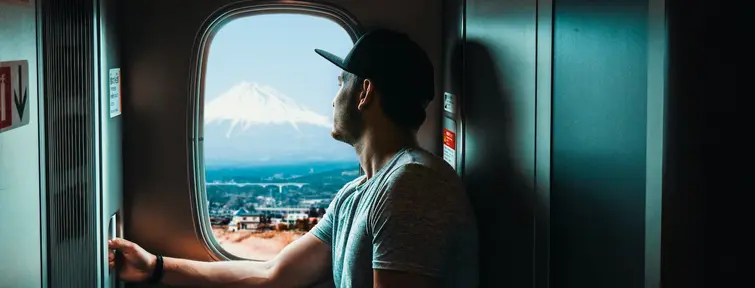
©Ramon Kagie, unsplash
The best way to discover Japan
The best way to travel around Japan is on a high speed Bullet Train. Order your Japan Rail Pass today online!
With a 20,000-kilometer network of lines and high-performance, punctual trains, Japan is a train lover's paradise.
If you want to optimize your time in Japan and travel quickly between the Japanese cities, opt for the high-speed Shinkansen 'bullet trains'.
These Shinkansen bullet trains are a big hit with tourists in Japan as they are easy to access, convenient for long-distance travel, and adorned with well-thought-out amenities for riders to use. Inside the carriages, there is a digital information system in Japanese, English, and other languages that shows upcoming stops as well as the estimated arrival time.
The JR Pass allows visitors to Japan easy access to the Shinkansen Bullet Trains with just a quick check of the pass at the ticket gate, otherwise, the bullet train has tickets available for purchase as well! The Shinkansen have reserved seat carriages (指定席) and unreserved seat carriages (自由席). As a Japan Rail Pass holder you can make seat reservations free of charge before your journey, but it is not mandatory. Seat reservations are advised in periods of high demand, such as the cherry blossom season (late March–early April), Golden Week (late April–early May), Obon (mid-August), and the New Year.
Green Pass and Gran Class
The ' Green Pass ' gives you access to the "Green Car", more luxurious seat option, without any additional fees. The "Green car" provides a large seat that can recline further than the ones in ordinary cars, a footrest, more space between the seats, an integrated radio set and space for your luggage. In recent years, newer models of trains have introduced a new class for the ultimate bullet train travel experience: the Gran Class. This new first-class train travel whose name was inspired by the French word for "big", was first instituted in 2011 on the Tohoku Shinkansen.
Shinkansen History
Japan was the first country to create a high-speed rail network. It was in 1964, on the occasion of the Tokyo Olympics, that the first Shinkansen line was inaugurated. This stretch of approximately 500km was constructed between the capital, Tokyo and Shin-Osaka following the ancient Tokaido route.The service was an immediate success , reaching the 100 million passenger mark in less than three years.
The Shinkansen bullet trains serve all major cities on the main island of Honshu and also on Kyushu. There are no Shinkansen in Shikoku and none in the Okinawan Islands. The fastest trains on these islands are the limited express trains.
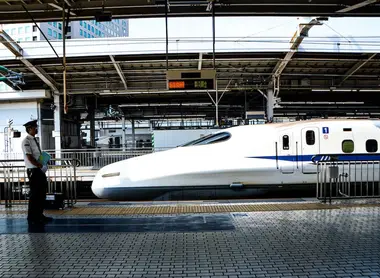
Future Shinkansen Extensions
- Hokuriku Shinkansen: The extension of this Shinkansen line connecting Tokyo to Kanazawa opened in March 2015, it will then be further extended to Tsuruga in 2025.
- Hokkaido Shinkansen: This extension has been in operation since March 2016 and goes out to Shin Hakodate. Second stage from Shin Hakodate to Sapporo will be fully operational in 2035.
- Kyushu Shinkansen: This extension, allowing high-speed Shinkansen travel to Nagasaki, is planned to open in 2023.
- Chuo Shinkansen: This new line will mostly run underground using Maglev technology allowing speeds of up to 500km/h. The first section between Tokyo and Nagoya is scheduled for completion in 2027.
Main Shinkansen Lines
- The shinkansen network
- The Kyushu shinkansen
- The Hokkaido shinkansen
- The Hikari/Nozomi/Kodama shinkansen
- The Hokuriku shinkansen
- The Toreiyu Tsubasa
Latest Articles
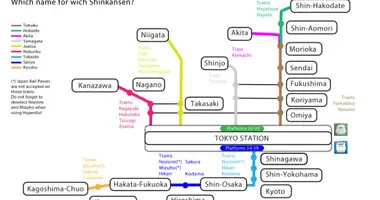
The Shinkansen Bullet Train Network
The first Shinkansen was issued for public use in 1964, right before the Summer Olympics held in Tokyo that same year.
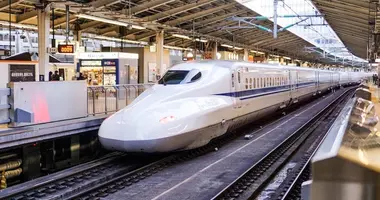
Tokaido Shinkansen - The Bullet Train Connecting Tokyo, Kyoto and Osaka
The bullet train going from Tokyo to Osaka has three different lines. What's the difference? Read more to find out.
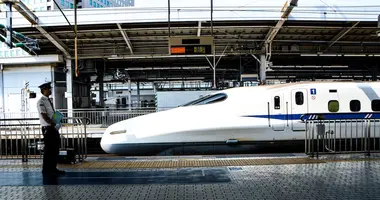
Can I ride the Nozomi & Mizuho Shinkansen with the Japan Rail Pass?
The Shinkansen bullet train is hailed as one of the most premium and efficient means of rail travel in the entire world, making it a popular choice for visitors to Japan who are engaging in
All the themes of the city

Unique Trains in Japan

Japanese Stations

Getting Around Tokyo
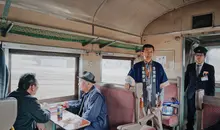
Itineraries for Japan
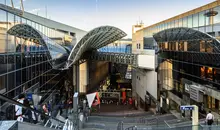
Getting Around Kyoto
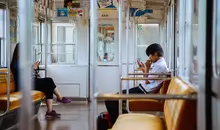
Trains in Japan
Please select your country on the list below:
- Switzerland
- United Kingdom
- Other countries
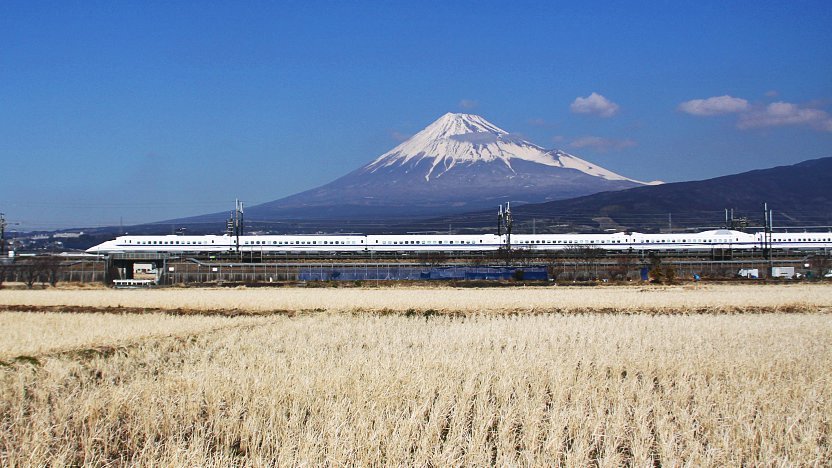
Japan's main islands of Honshu, Kyushu and Hokkaido are served by a network of high speed train lines that connect Tokyo with most of the country's major cities . Japan's high speed trains (bullet trains) are called shinkansen (�V����) and are operated by Japan Railways (JR).
Running at speeds of up to 320 km/h, the shinkansen is known for punctuality (most trains depart on time to the second), comfort (relatively silent cars with spacious, always forward-facing seats), safety (no fatal accidents in its history) and efficiency. Thanks to various rail passes , the shinkansen can also be a cost-effective means of travel .
Shinkansen network
The shinkansen network consists of multiple lines, among which the Tokaido Shinkansen ( Tokyo - Nagoya - Kyoto - Osaka ) is the oldest and most popular. All shinkansen lines (except the Akita and Yamagata Shinkansen) run on tracks that are exclusively built for and used by shinkansen trains. Most lines are served by multiple train categories, ranging from the fastest category that stops only at major stations to the slowest category that stops at every station.
Seats and classes
Seat classes.
Trains offer seats in two or three classes, which are typically found in separate cars:
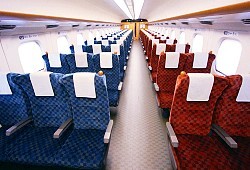
Reserved vs. non-reserved cars
Most shinkansen trains offer both non-reserved seats (���R��, jiyūseki) and reserved seats (�w���, shiteiseki) in separate cars. Only the Hayabusa, Hayate, Komachi and Tsubasa trains on the Tohoku Shinkansen and Hokkaido Shinkansen and the Kagayaki trains on the Hokuriku Shinkansen are fully reserved and do not carry non-reserved seating. In addition, Nozomi trains along the Tokaido / Sanyo Shinkansen become temporarily fully reserved during the New Year , Golden Week and Obon holidays. All seats in Green Cars are reserved. Bilingual signs indicate whether a car carries reserved or non-reserved seats.
Advance seat reservations are required to use a seat in a reserved car ( see below on how to make seat reservations). A fee of a few hundred yen applies for making seat reservations. Japan Rail Pass holders can make seat reservations for free.

Seat reservations allow you to secure a seat and travel with peace of mind. They can be made for all shinkansen trains, but are not mandatory on the trains that also carry non-reserved seating. Only the Hayabusa, Hayate, Komachi and Tsubasa trains along the Tohoku / Hokkaido Shinkansen , and the Kagayaki trains along the Hokuriku Shinkansen require seat reservations. In addition, Nozomi trains along the Tokaido / Sanyo Shinkansen become temporarily fully reserved during the New Year , Golden Week and Obon holidays.
Seat reservations can be made from one month before travel date (from 10:00am) until shortly before departure time. They can be made at ticket offices , at ticket machines or online . (Through the Tokaido Sanyo Kyushu Shinkansen Online Reservation Service reservations can be made up to one year in advance).
Are seat reservations recommended?
On many trains reserved seats do not get booked out, but on some they do. On particularly busy travel days (e.g. peak travel days during Golden Week , Obon and the New Year holidays), trains can get booked out several days in advance, but on most other days trains rarely get booked out more than a few hours in advance, if at all.
For peace of mind seat reservations are always recommended, especially when traveling in groups and preferring to sit together. On a few shinkansen trains along the Tohoku Shinkansen , Hokkaido Shinkansen and Hokuriku Shinkansen seat reservations are mandatory.
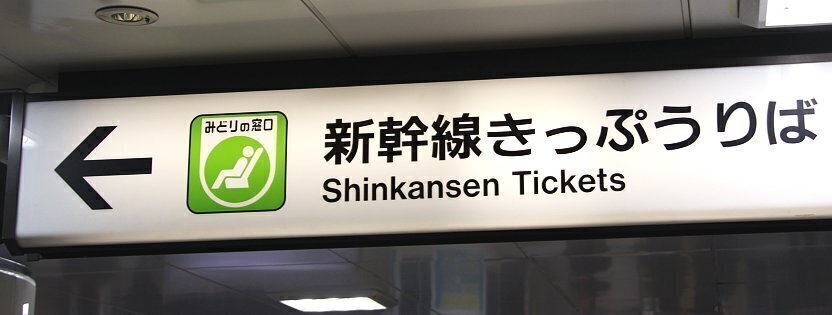
Shinkansen tickets
Fees that make up a shinkansen ticket.
A shinkansen ticket is made up of the following fees:
- Base fare The fare to get from A to B. Increases stepwise according to the distance traveled. Issued as a base fare ticket (��Ԍ�, jōshaken).
- Shinkansen supplement (aka limited express fee) The supplement fee for using a shinkansen train (as opposed to a local train ). The fee increases stepwise according to the distance traveled. The express supplement is issued as a limited express fee ticket (���}��, tokkyūken).
- Seat reservation fee 330, 530, 730 or 930 yen depending on the date of travel. An additional supplement (100-1060 yen depending on distance traveled) applies for using reserved seats on Nozomi , Mizuho , Hayabusa and Komachi trains. The seat reservation fee is included into the above-mentioned express supplement.
- Green car fee (if using a green car) The supplement fee for riding the green car. Increases stepwise according to the distance traveled. It is combined with the express supplement into a single ticket.
Shinkansen passengers typically receive two pieces of tickets: a base fare ticket and a supplement ticket. In some situations the two tickets are combined into a single ticket, while more than two tickets may be issued if multiple trains are involved (one base fare ticket and one supplement ticket for each train).

Buying a ticket at the ticket counter
Shinkansen tickets can be purchased at any ticket office found at all major and many minor JR stations nationwide. Credit cards are accepted at most ticket offices. In order to purchase a ticket, the following information is needed:
- Number of travelers
- Date of travel
- Departure station
- Destination station
- Ordinary or green car
- Reserved or non-reserved seat
For a seat reservation, the following additional information is required:
- Train name (e.g. Hikari) and train number or departure time
If you do not speak Japanese , it is recommended that you write the data on a piece of paper and present it to the salesperson in order to make the purchasing process smoother. Salespersons are generally familiar with the English vocabulary needed for the purchase of train tickets and seat reservations, but many have limited English conversation skills.
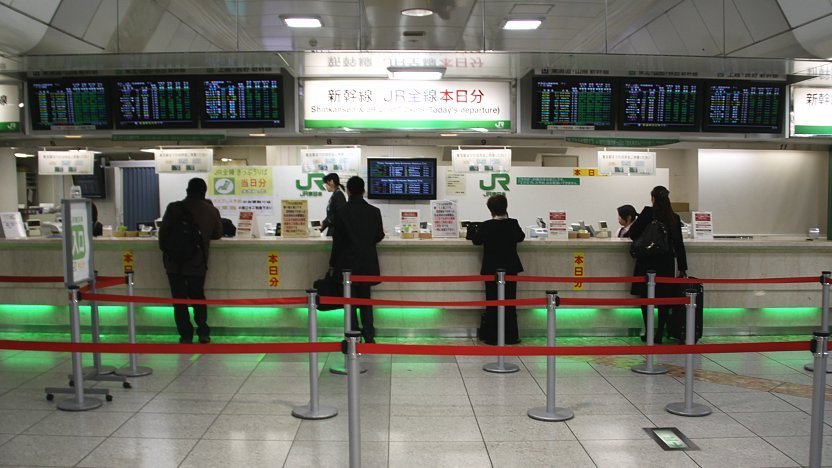
Buying a ticket at a ticket machine
Selected ticket machines can be used to buy shinkansen tickets. Most of them offer English menus. Some machines sell only non-reserved seats, while others can be used to also make seat reservations. Although ticket machines can be very useful if you know how to use them, the process of buying shinkansen tickets is not always straight-forward.
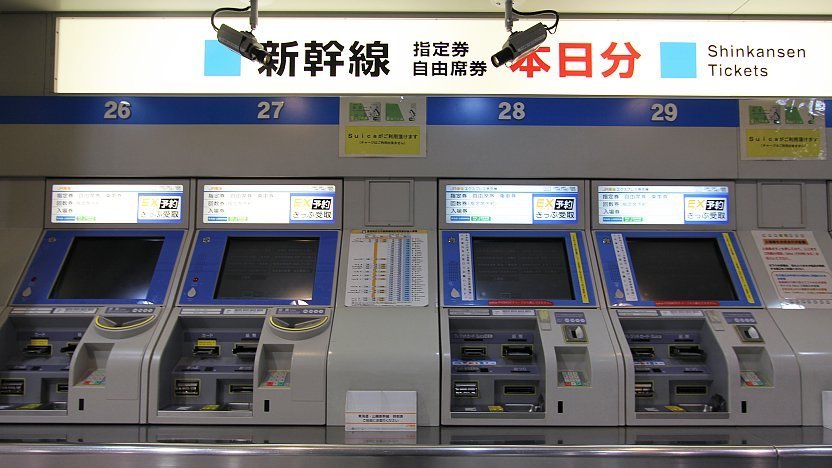
Buying a ticket online
Although such websites exist in Japanese , there is currently no single English website for buying tickets for shinkansen nationwide. Instead, there are multiple systems that each cover only selected lines. Two of them allow for the use of IC cards in place of paper tickets. If using paper tickets, you will need to be pick up the tickets in the region covered by each system from a ticket machine or ticket office before boarding the train.
In addition to the above-mentioned JR-operated websites, there are an increasing number of third-party online ticket services available on the internet, such as Japan Experience . These websites allow tickets to be purchased online and to be picked up or delivered to an address in Japan for a service fee of typically 10-20%.
IC cards , such as Suica or Icoca, can be used on selected shinkansen lines and need some set-up before use. There are currently three different systems:
- Tokaido Sanyo Kyushu Shinkansen Online Reservation Service (smart EX) The above-mentioned Tokaido Sanyo Kyushu Shinkansen Online Reservation Service allows users to register IC cards with the system and then use an IC card to ride the Tokaido / Sanyo / Kyushu Shinkansen . Fares are charged to a registered credit card rather than subtracted from the IC card's balance.
- JR East Reservation System - for shinkansen trains in eastern Japan In combination with the above-mentioned JR East Reservation System , it is possible to use IC cards to ride shinkansen trains in eastern and northern Japan. Fares are charged to a registered credit card rather than subtracted from the IC card's balance.
- Touch de Go - for shinkansen trains in eastern Japan Regular IC cards , including Suica, Pasmo and Icoca, can be used on non-reserved seats of shinkansen trains in the entire service area of JR East (see map above). Before you can use an IC card for this service, which is known as "Touch de Go", a one-time set-up procedure is required at a ticket machine. Fares will be subtracted from the IC card's balance.
Rail passes
The Japan Rail Pass can be used on all shinkansen trains and covers all the fees involved (except for a supplement fee required for Nozomi and Mizuho trains). Seat reservations can be made for free at ticket machines and ticket offices. Pass holders will receive a seat reservation ticket that indicates the reserved seat. They need no tickets besides their rail pass when using non-reserved seats. Numerous regional passes also cover some shinkansen trains.
Other discount tickets
Small discounts are available for set ticket (��, kaisūken) and round trip tickets (��������, ōfukuwaribiki) that are available for selected sections. Other tickets provide a discount when purchased in advance (����, hayatoku). Discount ticket shops around major stations also sell shinkansen tickets at small discounts.
More substantial savings are provided by travel packages which have to be purchased in advance at travel agencies. Among them are the "Shinkansen Travel Packages" and "Shinkansen One-Way Trip" (also known as Platt-Kodama) for travel along the Tokaido Shinkansen (including Tokyo-Kyoto and Tokyo-Osaka), sold at JR Tokai Tours travel agencies.
JR West also offers discounted one-way tickets along the Sanyo Shinkansen and Hokuriku Shinkansen exclusively to overseas tourists. Prospective travelers will first receive a mobile voucher which can then be exchanged to the real ticket at a ticket machine.
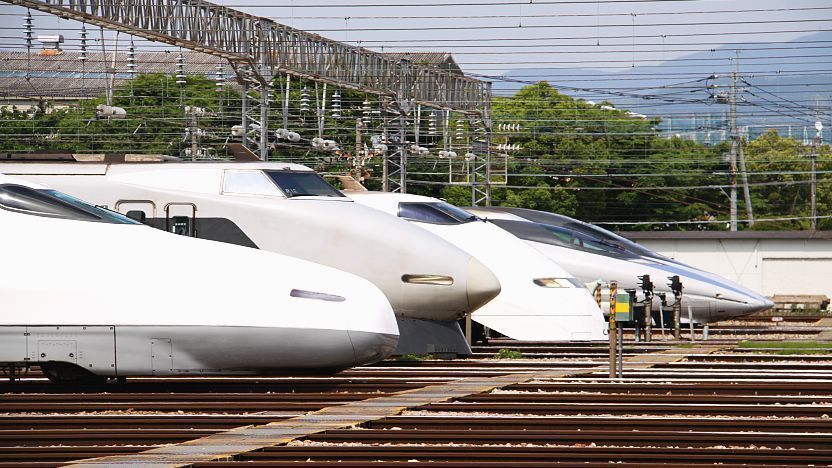
How to use the shinkansen?
After purchasing your ticket (see above), proceed as follows:
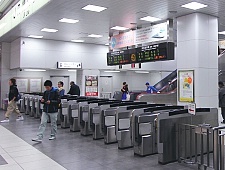
Ordinary seats typically come in rows of 3+2 seats, although on some trains they are arranged in rows of 2+2 seats. Seats can be reclined and have tables, pockets for magazines and open overhead shelves. They provide considerably more foot space than economy seats on airplanes . Newer train sets have electrical outlets installed along the walls or in the armrest.
Green cars always come with rows of 2+2 seats and have seats that are more spacious than ordinary seats. The seats are often equipped with a foot rest, reading light, electrical outlets and a seat warmer, although the exact facilities depend on the train set.
All seats on shinkansen trains can be turned by 180 degrees, allowing travelers to always face forward. The seats are turned by the staff at the terminal stations, but can also be turned by passengers, for example, to create a group of four or six seats facing each other.
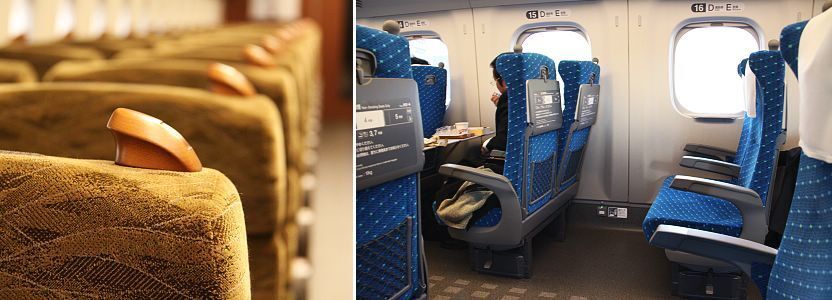
Amenities & services
Signs and announcements inside the trains are multilingual ( Japanese and English on all lines; plus Korean and Chinese on selected lines) and inform about upcoming stations.
A gradually decreasing number of shinkansen trains are served by small food carts with a selection of snacks, drinks and boxed meals (bento) which periodically pass along the aisle.
Free Wi-Fi is available on board of most shinkansen trains and at many shinkansen train stations. Depending on the operating company, the networks are known as Shinkansen Free Wi-Fi, JR-EAST FREE Wi-Fi and JR-WEST FREE Wi-Fi.
All shinkansen are equipped with multiple toilets , which are sometimes separated by gender. The toilets are Western-style except on some older train sets. Newer train sets are also equipped with spacious toilets for wheelchair users . Outside the toilets are wash corners with sinks and large mirrors.
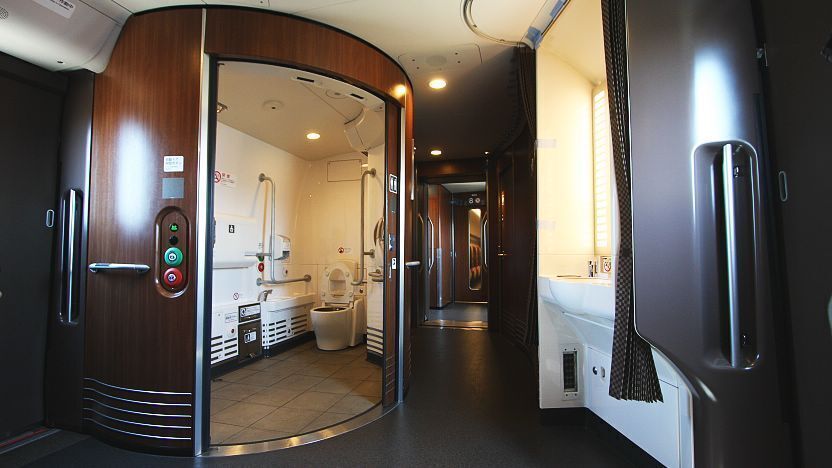
Smoking is not allowed on board of any shinkansen trains. Smoking in stations and on platforms is also prohibited, except in designated smoking zones.
According to the rule book, each traveler is allowed to bring up to two pieces of luggage onto a train (not including small bags), with each piece not weighting more than 30 kilograms and not measuring more than 250 centimeters when adding up width, height and depth. However, even when bringing less than this upper limit, we recommend travelers with a lot of luggage to consider using a delivery service to make the trip more comfortable for themselves and the passengers around them.
Shinkansen trains are equipped with relatively spacious overhead shelves (smaller on certain train sets) which can store small and medium sized bags and suitcases. Furthermore, on many shinkansen trains the leg room is surprisingly spacious and may be large enough for your legs and a mid-sized suitcase, although this may not be the most comfortable solution.
Additionally, there is space for two or three large suitcases behind the last row of seats in each car; however, for security and convenience reasons only passengers sitting in the last row of seats are supposed to place their luggage into the space behind their seats.
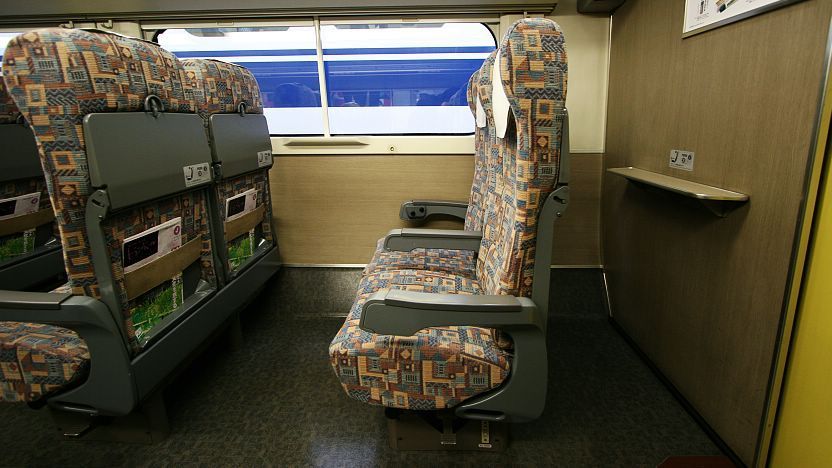
A special rule for oversized luggage applies along the Tokaido , Sanyo , Kyushu and Nishikyushu Shinkansen . Passengers with oversized luggage, i.e. luggage pieces whose height, width and depth add up to more than 160cm (63 inches), are now required to make a seat reservation for specific seats with nearby storage space. It is not possible to bring oversized luggage into non-reserved cars.
Passengers without a reservation for their oversized luggage will be asked to move their luggage to a space specified by the train conductor and pay a 1000 yen surcharge which is not covered by the Japan Rail Pass . No plans have been announced to introduce a similar system on other shinkansen lines.
Shinkansen manners
- Line up on the platform before boarding.
- Don't block the aisle with luggage.
- When having a conversation, keep your voice down.
- Recline your seat with consideration for the person behind you. Return the seat to its original position before exiting the train.
- Set your mobile phone to silent mode. Don't talk on your phone except in the deck areas between cars.
- Take your garbage with you when getting off the train and discard it into a garbage bin on the train or in the station.
Future of the shinkansen
Several new shinkansen routes are currently being built:
- Hokkaido Shinkansen: extension from Hakodate via Niseko and Otaru to Sapporo sometime after 2031.
- Hokuriku Shinkansen: extension from Tsuruga via Obama and Kyoto to Osaka by the 2040s.
- Chuo Shinkansen: Using maglev technology, this new line is scheduled to connect Tokyo with Nagoya sometime after 2027 and with Osaka sometime after 2037.
Questions? Ask in our forum .
Links and Resources
Jr east reservation system, tokaido sanyo kyushu shinkansen online reservation service, jr west reservation system, jr kyushu reservation system, jr hokkaido, links to timetable websites, jr tokai tours.

- Transportation
Shinkansen: A Complete Guide to the Japanese Bullet Train
All you need to know about the Shinkansen, including how to book a ticket and more.

The Shinkansen or Japanese bullet train was the world’s first high-speed train, with its first service launched on October 1, 1964, linking Tokyo to Osaka. Today other countries have surpassed Japan in speed, but it is still among the top 5 fastest in the world.
Operated by Japan Railways, Japan’s largest railroad company, and from that first line, it now has nine Shinkansen lines covering practically the entire country from North to South. Today the Shinkansen has become without a doubt the best way to travel around Japan. Especially the bullet train from Tokyo to Osaka and the bullet train from Tokyo to Kyoto are the most frequent.
Types of Shinkansen
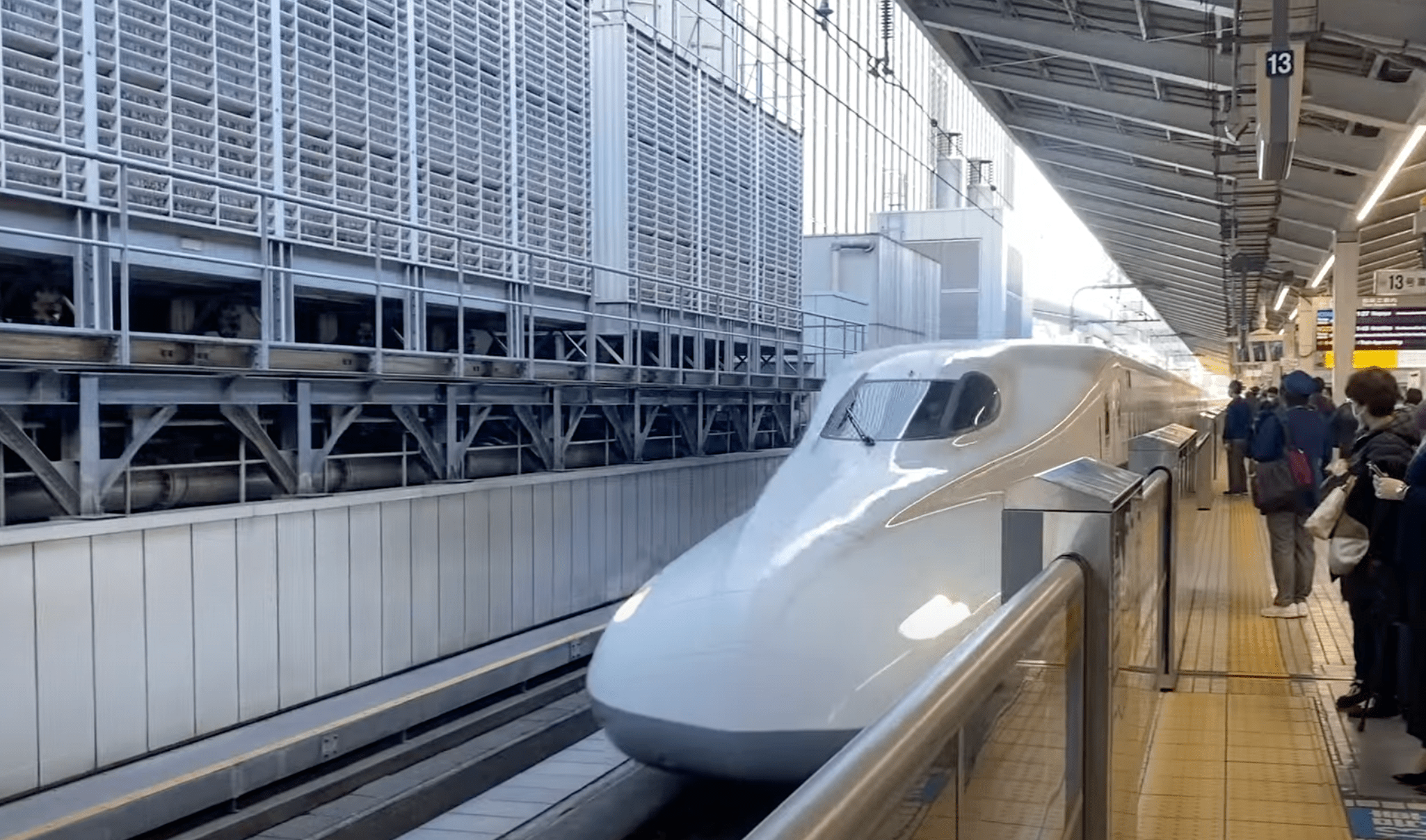
Although we call them all Shinkansen, there are different types of bullet trains, depending on whether they have more or less speed and how many stations they stop at. The best known are the Nozomi and the Mizuho, as they are the fastest, and then the Hikari, Kodama, and Sakura.
Shinkansen Cars and Seat Classes
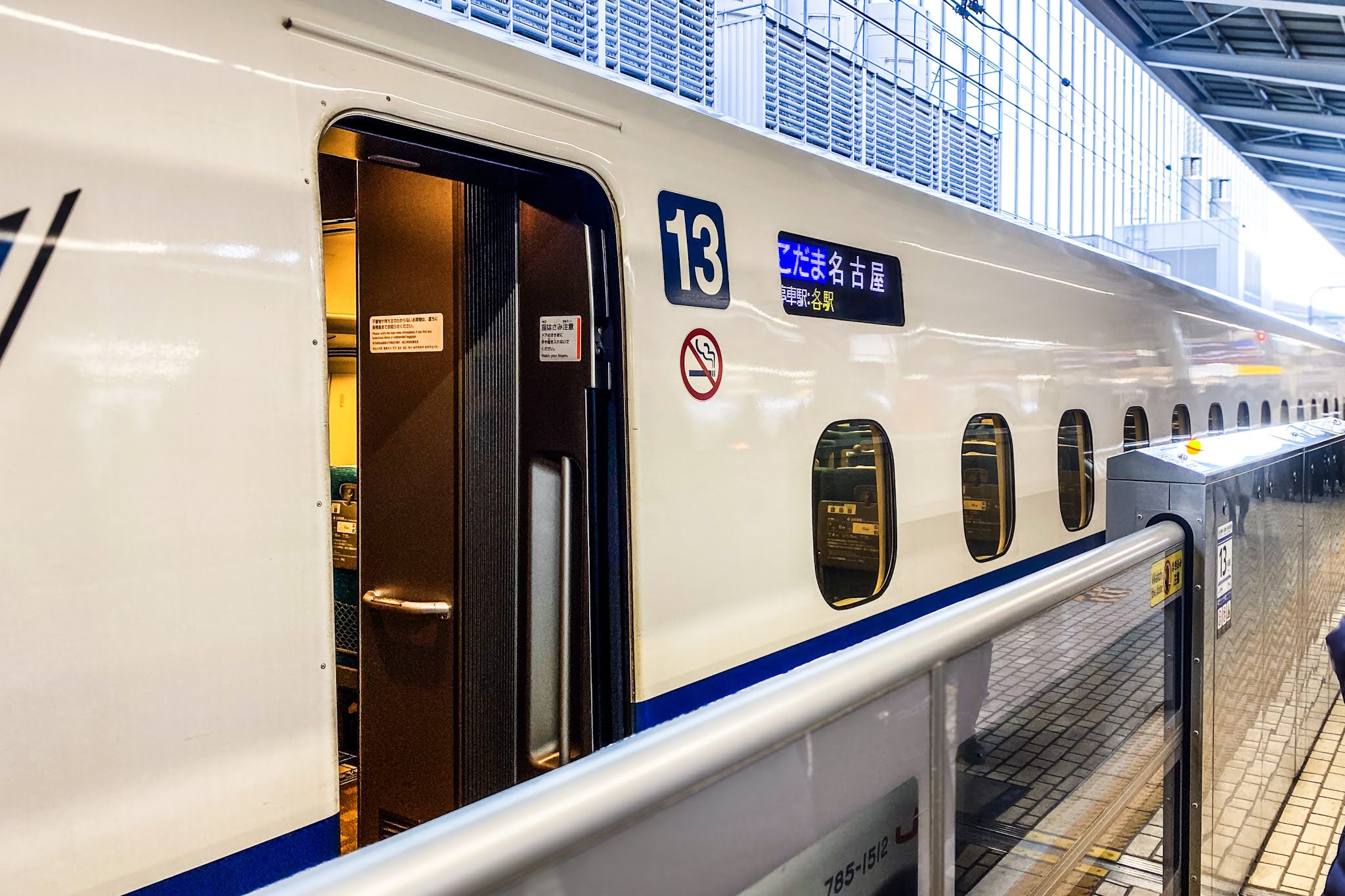
There are mainly two types of cars, those with reserved seats and those with non-reserved seats. Most bullet trains in Japan (though not all), have about 5 cars as non-reserved. The explanation for this is that there is an extra charge for reserved seats. If you don’t want to pay the extra supplement, you can access the non-reserved cars. Also, if you don’t know exactly what time you will catch the train, you can buy a ticket without a reserved seat and jump on the first train of the category you paid for in the non-reserved cars.
Users of special passes such as the Japan Rail Pass can reserve seats at no extra charge, as it’s included in the pass.
Please note that if you are traveling to Japan during the high season for domestic tourism, such as Golden Week, Obon, or New Year’s Eve, some lines temporarily switch to reserved cars only.
Seat Classes
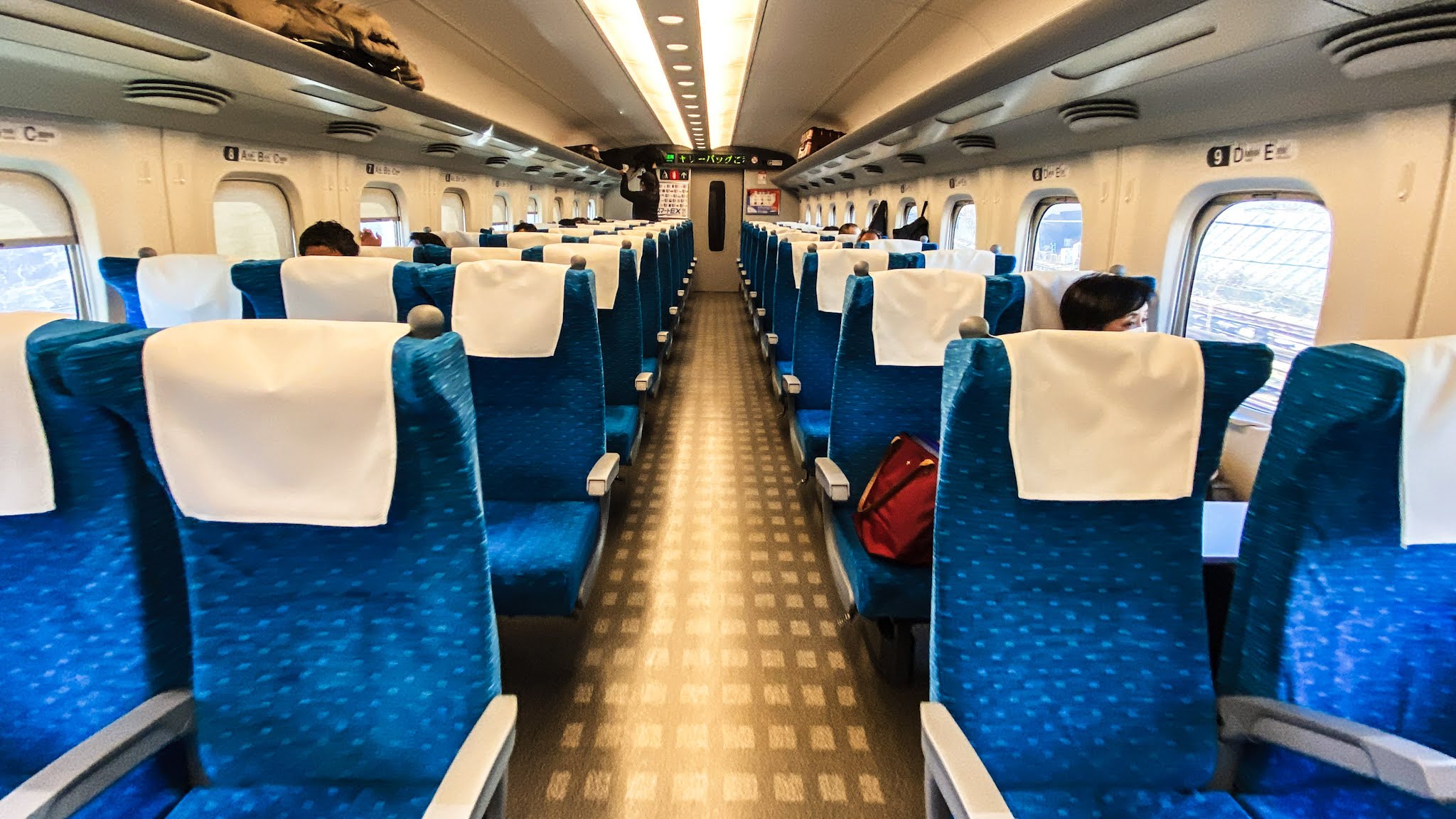
Most parts of bullet trains in Japan have only two types of seat classes, ordinary or green class, but in a few types, there is a third category called gran class.
Ordinary Car: they have so-called regular seats. However, on Japan’s bullet trains even the regular seats are spacious and comfortable.
Green Class: special cars with larger and more luxurious seats. Green car cars are all reserved seating.
Gran Class: only a few trains have this option, but is even more luxurious and comfortable than Green Class.
How to Book Shinkansen Tickets
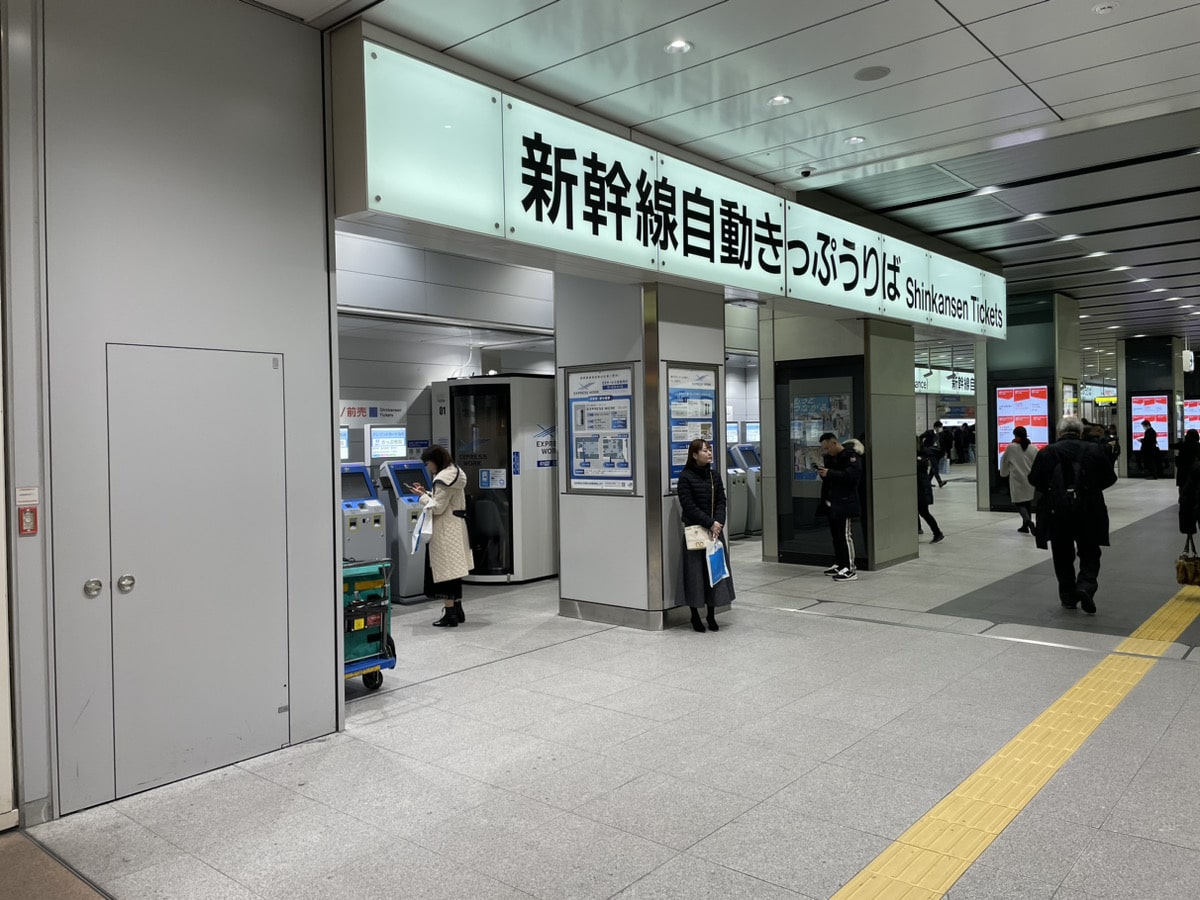
Official JR ticket offices
Shinkansen tickets can be purchased at official JR ticket offices, called Midori no Madoguchi in Japanese or simply Ticket Office in English, at ticket machines, or online. Ticket Offices are located in all major JR stations, and in some cases, there is more than one office if the station is very large. It’s the most direct way to buy them, but be aware that except in some tourist spots such as the airport, the staff usually do not speak English even if they know some basic words related to the job. It’s also quite time-consuming (especially at times when there can be a long queue of people waiting).
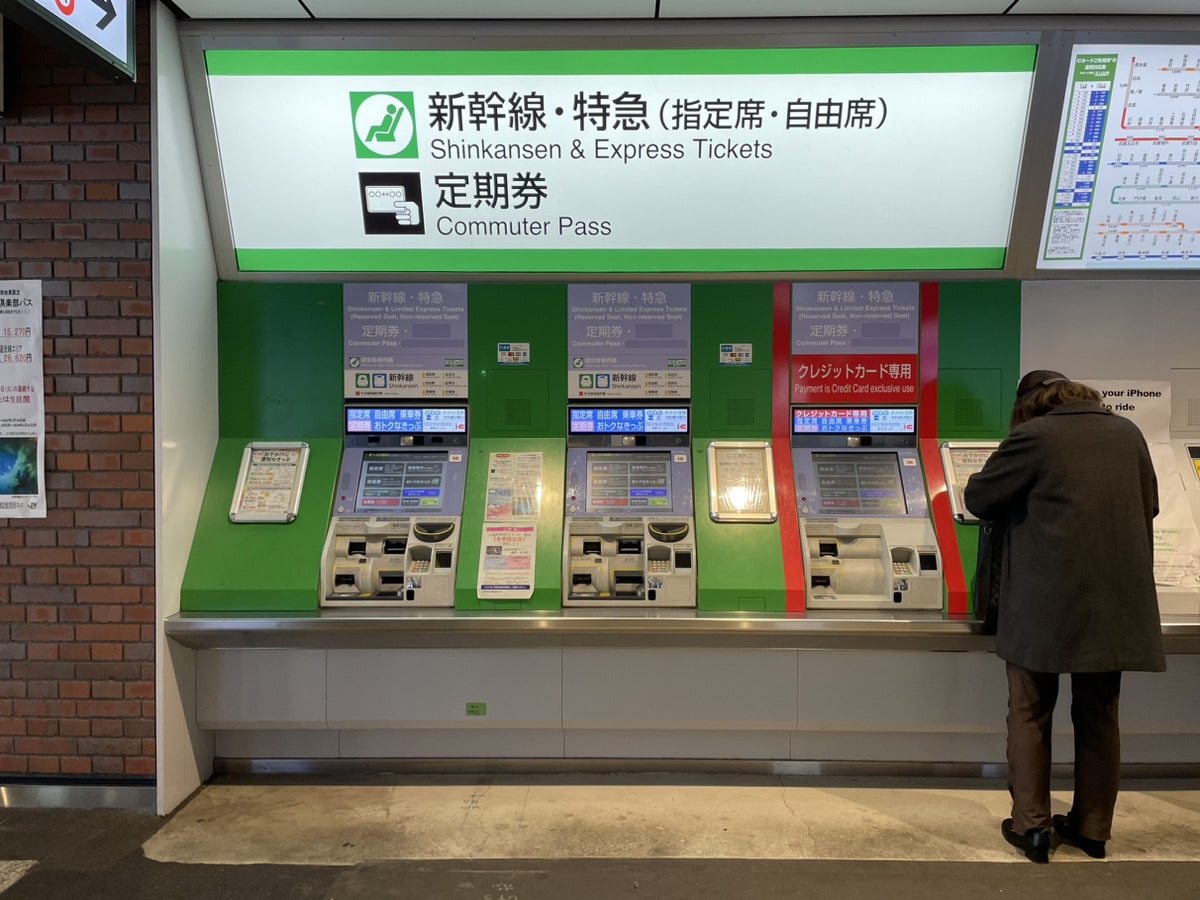
Japan Bullet Train
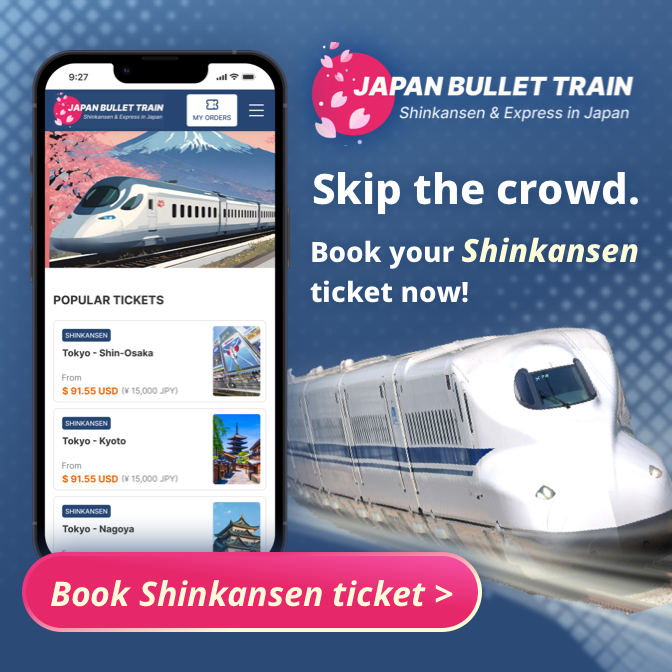
Japan Bullet Train is a new service launched by our partner company, which offers bullet train and express train tickets in Japan for tourists. All the service is in English (and 3 other languages), including customer service. They accept payments with all major credit cards, and the process is very easy and simple, especially compared to Japanese websites.
After your purchase, once your ticket is confirmed you will receive a QR code. You simply have to scan this QR code in the vending machines available at the main stations from where the bullet train departs and you will get your physical ticket, with which you can access the platform. All from the comfort of your smartphone.
▶︎ Book now your Shinkansen tickets!
Vending machines
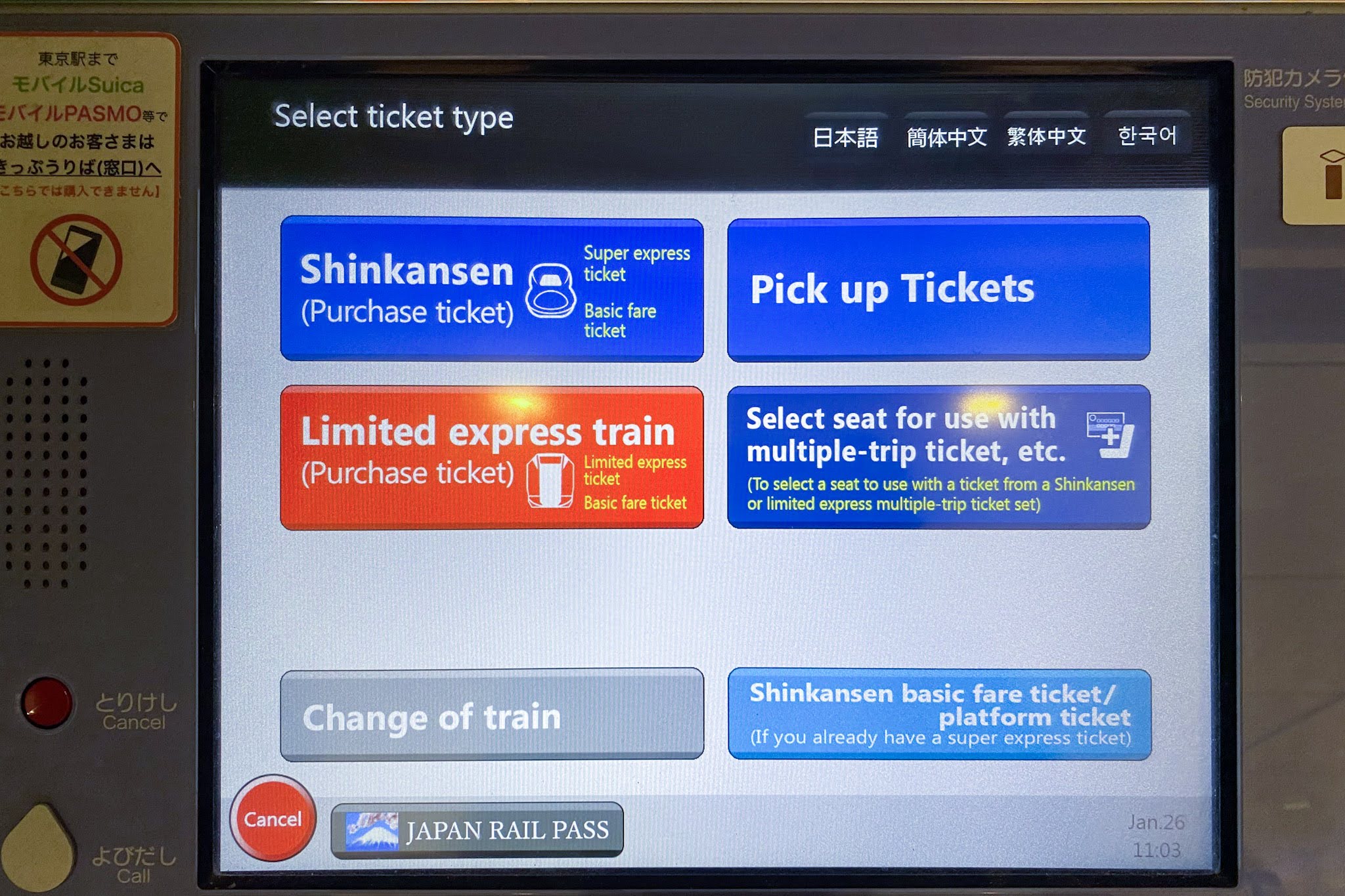
The other option would be to look for a ticket vending machine, which usually has an English version available. The cons are that there are not always machines, only at major stations, and some may not accept foreign cards. Also, the process can be equally long, especially if you don’t understand how bullet train tickets work in Japan (requires different information, etc).

Information and types of details written on the ticket
The bullet train ticket is divided into two parts: on the one hand we have the base charge, which is basically the price to go from one point to another (for example, from Tokyo to Osaka). The longer the distance, the higher the price. On the other side is the supplement for using the Shinkansen (the base price would be that of a local train). It’s called a limited express fee ticket. It’s quite common that when you buy a Shinkansen ticket, you end up with at least two tickets (one for the base fare and one for the limited express fee). In addition, those who wish to do so can also pay an extra supplement for seat reservations and for traveling in Green Car (or Gran class if available).
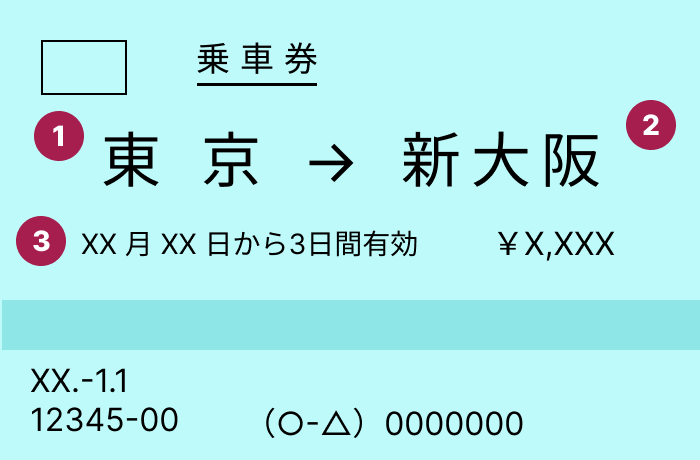
Boarding Ticket
1. Departure Station
2. Arrival Station
3. Validity Period
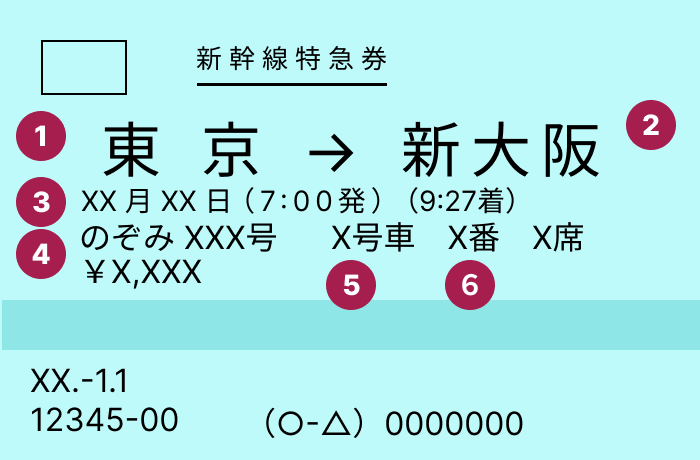
Limited Express Ticket
3. Departure Date & Time
4. Train Name & Type
5. Car Number
6. Seat Number
Japan Rail Pass
The Japan Rail Pass, also known as JR Pass, is a Japan Railways pass for foreign tourists in Japan that allows unlimited travel on all Japan Railways trains, including bullet trains, for 7, 14, or 21 days. It was one of the best-selling products by tourists in Japan as it allows you to save money on bullet trains. In addition, it also includes other JR transportation, such as some buses or the ferry that connects Hiroshima with Miyajima.
In October 2023 the prices have gone up, so depending on your route it might not be worth it, but it is still a good value for money if you want to go to several cities.
Ordinary Pass (2nd class)
Green Pass (1st class)
In return, with the new prices the JR Pass includes the Nozomi and Mizuho trains, that were previously excluded from the pass. Japan Railways has also announced that the new Japan Rail Pass will include discounts at various attractions in Japan.
For more information: A Guide to Japan Rail Pass
Other Passes
If this is not your first trip to Japan and you are looking to visit other less popular (but equally amazing!) areas, you may not need the Japan Rail Pass. There are other JR passes available that may interest you! Japan Railways is divided into East and West, and JR East has 3 very interesting 5 and 3-day passes that cover the areas of Tohoku, Nagano, Niigata, and part of Yamanashi and Shizuoka.
JR Hokkaido Rail Pass: Covers all the trains operated by JR Hokkaido in Hokkaido
5 days: 20,000 yen/ 7 days: 26,000 yen
JR East Tohoku Pass: Covers all the trains operated by JR East in Kanto and Tohoku
5 days: 30,000 yen
JR East Hokkaido Pass
6 days: 35,000 yen
JR East Nagano Niigata Area Pass: Covers Nagano, Niigata, and Kanto area and part of Yamanashi, Shizuoka, and Tohoku.
5 days: 27,000 yen
JR Tokyo Wide Pass
3 days: 15,000 yen
Hokuriku Arch Pass: Unlimited trains between Tokyo and Osaka using the Hokuriku Shinkansen (Nagano, Kanazawa, Toyama, etc).
7 days: 24,500 yen
JR West All Area Pass
7 days: 26,000 yen
JR Kansai Area Pass: Cover the trains in the Kansai area (Osaka, Kyoto, Nara, Kobe and Himeji)
1 day: 2,800 yen /2 days: 4,800 yen/ 3 days: 5,800 yen/ 4 days: 7,000 yen
Shinkansen Lines
From tokyo to south japan.
Tokaido Shinkansen: Tokyo-Osaka
The first to be launched and the most popular line, it connects the three largest metropolises in Japan: Tokyo, Nagoya, and Osaka (passing through and Kyoto). There are three types of trains covering this route.
Nozomi: the fastest train of all. It arrives from Tokyo to Shin-Osaka in exactly 2 hours and 21 minutes (33 minutes to Nagoya).
Hikari: it would fall into the semi-fast train category, with a few more stops than the Nozomi and a time of just under 3 hours.
Kodama: the slowest train on this line, as it has more than 15 stops, taking almost 4 hours from Tokyo to Shin-Osaka.
Sanyo Shinkansen: Osaka-Fukuoka
The second Shinkansen line, which was completed almost 11 years after the first. The first section, completed in 1972 links Osaka with Okayama, and the second section, completed in 1975 links Osaka with Fukuoka (Hakata station). It has up to 5 train services.
Nozomi, Mizuho: the two fastest, connecting Shin Osaka to Hakata in less than two and a half hours with 6 stops. Some Nozomi trains connect the Sanyo line with the Tokaido line, so it’s possible to travel from Tokyo to Hakata in 5 hours without getting off the train.
Kodama: the slowest option
Hikari, Sakura: this is the fastest service, but the Hikari train only connects Shin Osaka with Okayama, without reaching Fukuoka.
Hokuriku Shinkansen: Tokyo – Kanazawa
The original line connected Tokyo with Nagano and was opened in 1997 for the Nagano Olympic Games. In 2015 it was extended and now connects Tokyo with Kanazawa.
Kagayaki: connects Tokyo to Kanazawa in less than two and a half hours, with only two stops in between, being the fastest train for the Hokuriku Shinkansen line.
Hakutaka: takes 3 hours from Tokyo to Kanazawa, making more stops than the Kagayaki.
Asama: connects Tokyo with Nagano, but doesn’t arrive in Kanazawa.
Tsurugui: this is a small service that only covers the route Toyama-Kanazawa
Kyushu Shinkansen: Hakata- Kagoshima Chuo
The southernmost line in Japan, it connects the capital of Fukuoka, Hakata with Kagoshima passing through other important cities such as Kumamoto.
Mizuho: as in all other lines, the Mizuho is the fastest, making only 3 stops.
Sakura: the second fastest in the Kyushu line.
Tsubame: the one that stops at all stations and, therefore the slowest.
Kamome: different from the three above, this train covers the route Nagasaki – Takeo Onsen.
From Tokyo to North Japan
Tohoku Shinkansen: Tokyo-Aomori
In the opposite direction, to the north, we have the Tohoku Shinkansen, connecting Tokyo with the northernmost part of the main island, Aomori.
Hayabusa: connecting Tokyo with Shin-Aomori in less than 3 and a half hours, this is one of the fastest trains in Japan and the only one in the Tohoku Shinkansen line that arrives at Aomori.
Hayate and Yamabiko: both connect Tokyo with Morioka, but the Hayate is slightly faster.
Komachi: instead of going to Shin-Aomori, this train goes to Akita after Morioka and takes around 4 hours.
Nasuno: makes a very short line from Tokyo to Koriyama.
Tsubasa: detour in Sendai to go to the Yamagata area in less than 3 hours, arriving at Shinjo Station.
Hokkaido Shinkansen: Aomori-Hakodate
After the Tohoku Shinkansen line finishes in Aomori, the Hokkaido Shinkansen connects the end of the main island with the southern part of Hokkaido.
Hayabusa: the same train that is in the Tohoku Shinkansen line, which continues on its way to Hakodate after stopping in Shin-Aomori. From Tokyo to Hakodate takes 5 hours approximately.
Hayate: after finishing in Morioka, the Hayate train operates between Shin-Aomori and Hakodate.
Joetsu Shinkansen: Tokyo-Niigata
Toki: connects Tokyo and Niigata in an hour and a half.
Tanigawa: Yuzawa is one of the most popular winter skiing destinations, and this route operates between Tokyo and Yuzawa, arriving in less than one hour.
How to Ride a Bullet Train in Japan
Once we have our tickets or our card, the next step is to get on the train and start our journey! Boarding a train in Japan should not be much different than in any other country, but some unwritten rules are best to learn.
Ticket gates
The turnstiles have two options. One is a slot on the front to insert tickets (those who have JR Pass, can insert it here as well in the JR lines). At the top, there is a kind of mini screen where you can place your Suica/Pasmo card or the IC card you use on top. If you have the Suica in your cell phone, you simply have to bring the cell phone close to that screen.

Once inside, find your train and your platform. There will be various information panels at different points. The information is first in Japanese, but at major stations, it will also appear later in English. If you have trouble understanding the information on the panels, take a look at this mini-guide.
How to interpret the platform display

2. Train No.
3. Departure Time
4. Destination
6. Unreserved Seats Cars
At the Platform
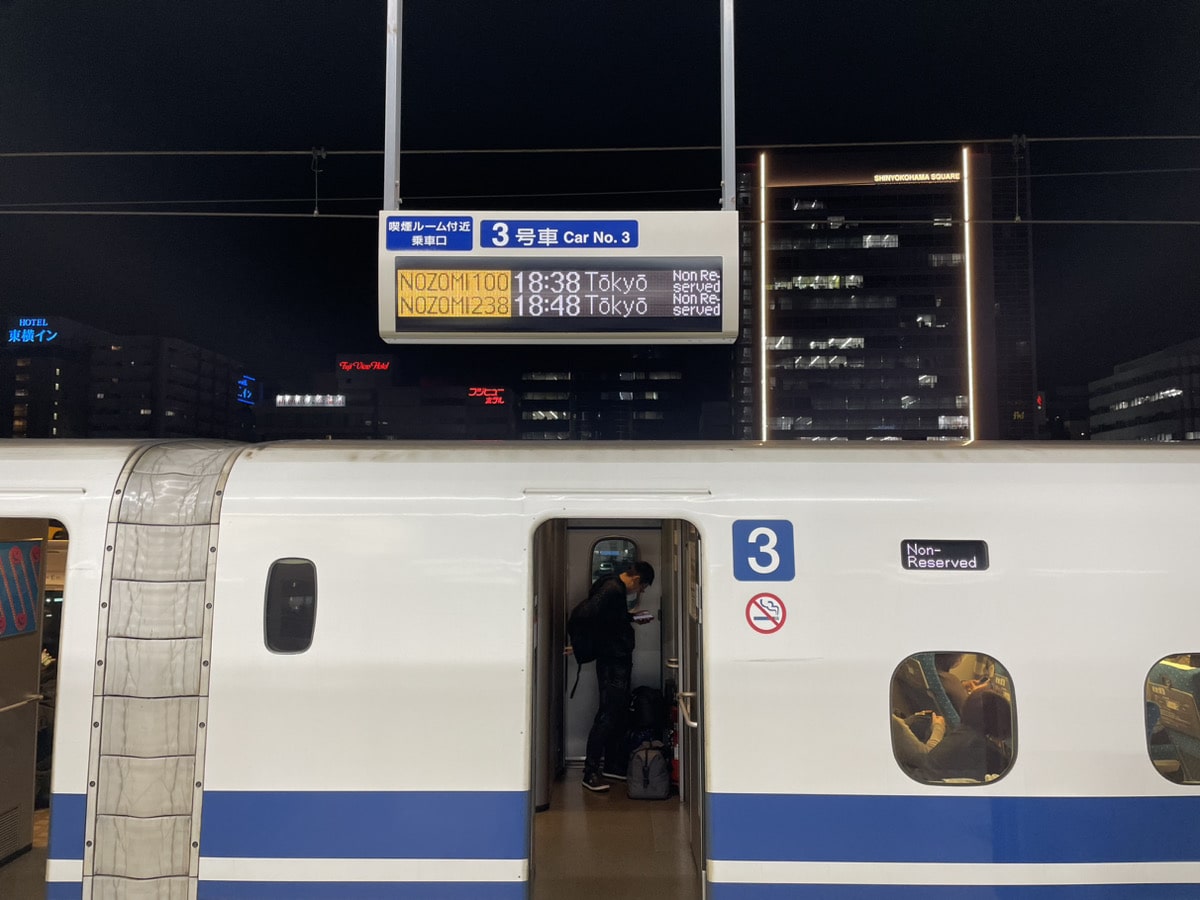
Before entering the train, you will see people waiting in lines to enter in order. You must get in line and wait your turn. If there is no one and you are the first, let people out before getting on the train.
If you arrive when the train is about to leave, please don’t run or rush in, as it’s dangerous. Wait for the next train.
Inside the Train
The door opens automatically, so after entering, look for your seat if you have a reserved seat, and if you have an unreserved seat, freely sit in any free seat of your choice.
When boarding, it’s not necessary to give a baggage inspection or presentation of your ID, but the ticket inspector may ask you to present your tickets in the car, so it’s recommended to keep the tickets in a place where you can get them right away.
Shinkansen Tokyo to Osaka
The bullet train from Tokyo to Osaka is the most widely used. As mentioned above, the Nozomi connects Tokyo Station and Shin-Osaka Station in less than 2 hours and a half. The price of the tickets cost around 16,800 yen for a non-reserved seat and 17,500 for a reserved seat . The Green car ticket is approx. 22,000 yen.

From Tokyo Station
First train: 6:00
Last train: 22:47
Location of ticket gates: blue areas on this map
Platform: platform No.14–19
From Shinagawa Station
Last train: 22:54
Location of ticket gates: blue areas at the bottom of this map
Platform: platform No.23&24
Shinkansen Tokyo to Kyoto
Another popular route for tourists is Tokyo-Kyoto. It takes just over 2 hours with the Nozomi and about 2.5 hours with slower models. The fare of Nozomi with a reserved seat is near to 17,000 JPY and a non-reserved seat is around 16,000 JPY .
Platform: platform №14–19
Platform: platform №23&24
Can I eat on the Shinkansen?
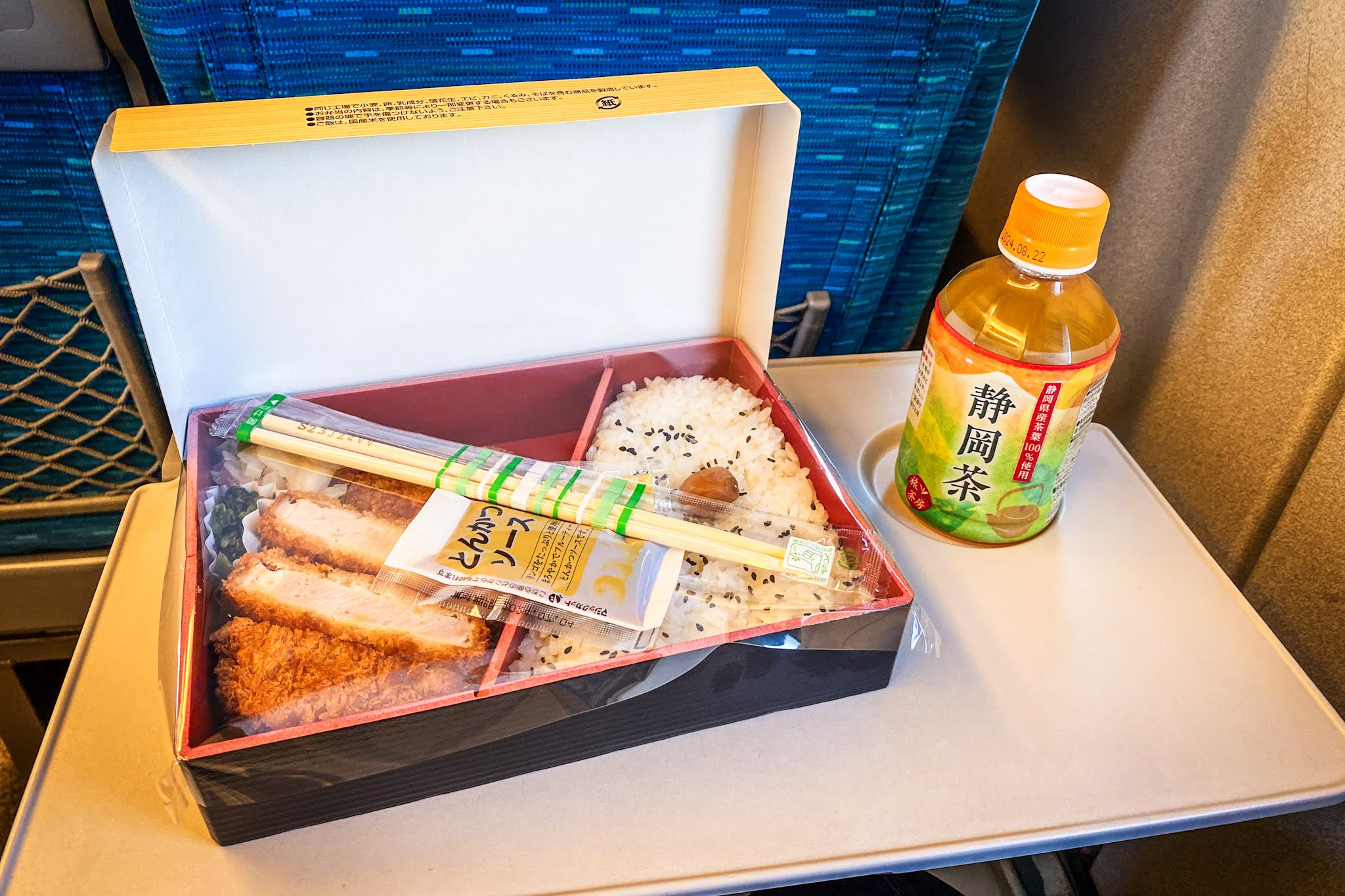
Eating and drinking on the bullet train is allowed, as long as you leave your seat clean and do not disturb other passengers. At main stations, such as Tokyo Station, they sell so-called “ekiben”, which are bentos (Japanese packed lunch) to eat on the Shinkansen.
What facilities does the Shinkansen have?
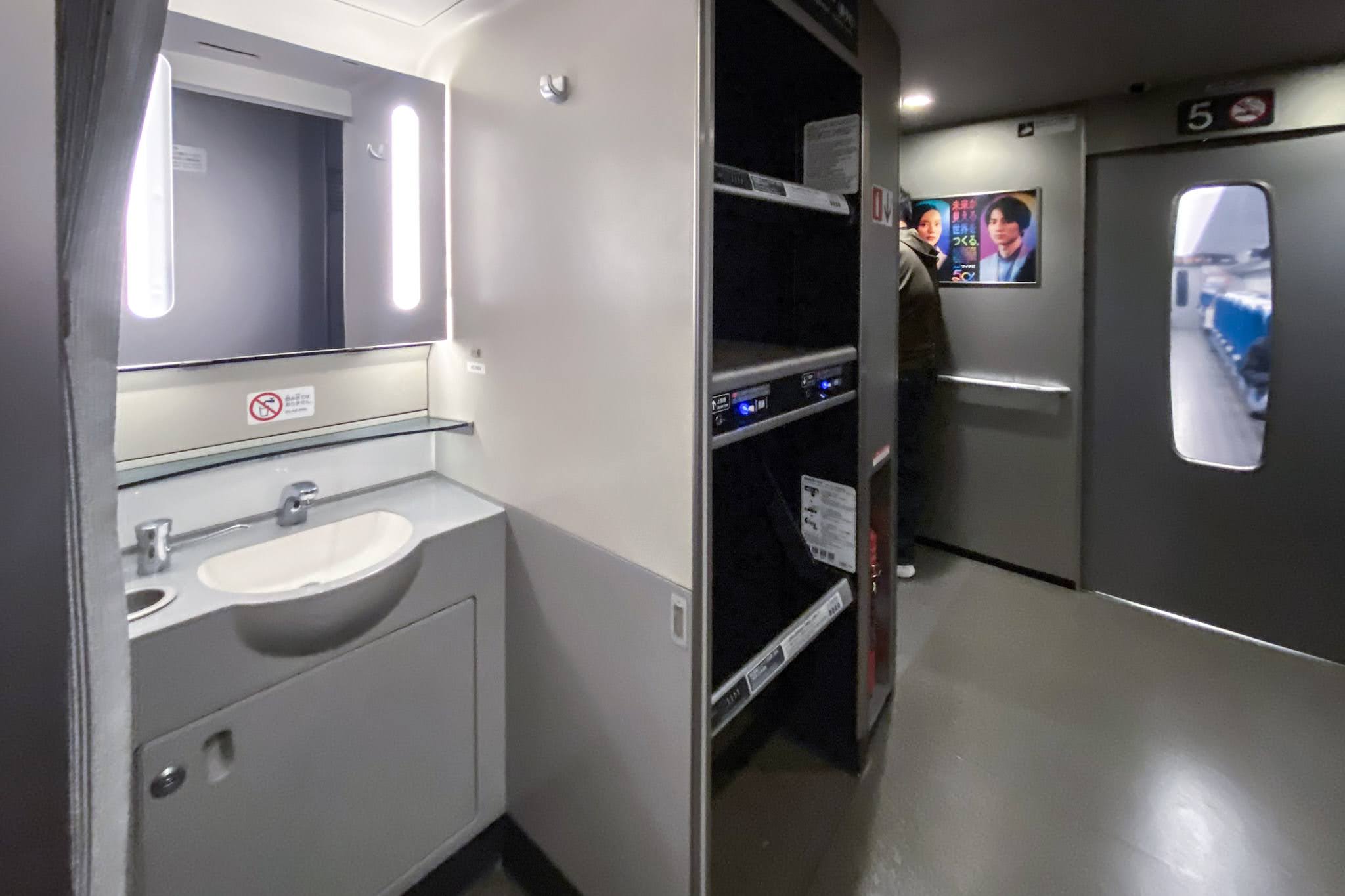
All Shinkansen trains are equipped with several restrooms located in different cars. The number and locations of restrooms may vary depending on the carriage. They are also equipped with multipurpose rooms for individuals with physical disabilities or mobility challenges and breastfeeding babies ( on some shorter train configurations, there may be no multipurpose room).
Free Wi-Fi service is also accessible during your journey on the Shinkansen, and almost all of them have c harging outlets (although there may be some without).
Please note that smoking is totally forbidden inside the train. Some trains may have smoking rooms, but not all of them.
How can I change or cancel my ticket?
As a general rule, non-reserved seat tickets can be refunded up to the day of departure while reserved seat tickets are only refundable up to the departure time (even if the departure time has passed, a refund may be issued for the portion of the ticket).
For more information: How to Refund a Shinkansen Ticket
What to do if I miss my ride?
Depending on the type of ticket you have purchased and the Shinkansen line you are going to use, there are different options you can do if you miss your bullet train, like take a non-reserved seat on the following Shinkansen, rebuy a reserved seat for a subsequent Shinkansen or cancel and receive a refund.
More info: What to Do If You Missed the Shinkansen
What to do if I overshoot my stop?
In most cases, it’s possible to change trains and go backward without any extra fee, but a required special permission “ go-jou” ( 誤乗 ) is required. Please explain the situation to the conductor or the ticket gate staff and ask for a special stamp on your original ticket.
However, keep in mind that this is an exception, and do not take it lightly. Be aware of the voice announcements so as not to miss your stop.
Helpful phrases in Japanese:
I overslept: 寝過ごてしまいました (nesugoshite shimai mashita).
I took the wrong direction/other name/different stop train: 乗り間違えてしまいました (nori machigaete shimai mashita).
I couldn’t catch the train: 乗り遅れてしまいました (nori okurete shimai mashita).
Couldn’t door out by heavy/crowded by morning/evening rush hour, special big event or some special reason: 混雑していて降りられませんでした (konzatsu shiteite orirare masen deshita).
I missed hearing the car/station announcement: 放送を聴き逃してしまいました (housou wo kiki nogashite shimai mashita).
I couldn’t understand the announcement because it was only in Japanese: 日本語だけのアナウンスが理解出来ませんでした (Nihongo dake no “announce” ga rikai dekimasen deshita).
From Tokyo to popular destinations: Train or Bus?
If you are not sure which is the best option to get from Tokyo to some of the most popular cities, and want to compare different options such as train, bus, plane, or private transport, here you have a few complete guides for the most touristic destinations.
▶︎How to Get to Hakone from Tokyo
▶︎How to Get to Nikko from Tokyo
▶︎How to Get to Mt.Fuji from Tokyo
▶︎How to Get to Osaka from Tokyo
▶︎How to Get to Kyoto from Tokyo
▶︎How to Get to Hiroshima from Tokyo
▶︎How to Get DisneyLand and Disney Sea from Tokyo
Also how to get to Tokyo from the two main airports, Narita Airport and Haneda Airport.
▶︎How to Get from Nartita Airport to Tokyo
▶︎How to Get from Haneda Airport to Tokyo
Consider the bus option to save money
If you are concerned about the loss in case you miss your ride, we recommend using a highway bus, which costs way less than the Shinkansen. If you don’t have much information about highway buses in Japan, the following articles may be useful.
▶︎How to Ride a Bus in Japan: A Detailed Bus Guide for Tourists
▶︎How to Book Bus Tickets in Japan
▶︎3 Best Highway Buses in Japan
▶︎10 Best Destinations to Go from Tokyo by Bus
▶︎How to Ride a Night Bus in Japan
▶︎Bus Guide between Osaka and Kyoto
▶︎Bus Guide between Osaka and Kansai International Airport (KIX)
▶︎Bus Guide between Kyoto and Kansai International Airport (KIX)
If is your first time in Japan and don’t know where to go, this article may help! ▶︎A Comprehensive Guide to Trains in Japan: Including Shinkansen and Japan Rail Pass
▽For more Shinkansen Information▽
▶︎A Guide to Japan Rail Pass
▶︎The Ultimate Guide for Transportation in Tokyo
▶︎How to Move around Kyoto
Thanks for reading this far! I hope it has been helpful 🙂 For more tips and information about traveling in Japan, you have these articles too. And even more information in Japan Web Magazine!
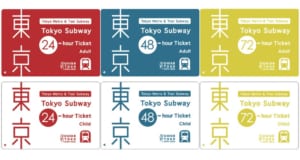
▽Related Articles▽
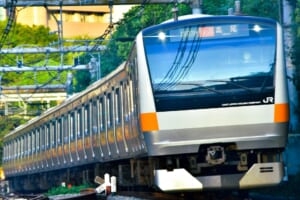
▼Editor’s Picks▼
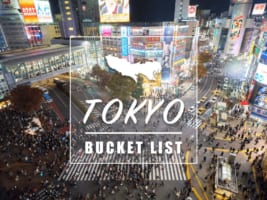
From Barcelona to Tokyo. Coffee & Adventure lover 🌏☕️
I started to like Japan because of the anime, music and doramas, but after my first trip to the country I found what I love the most: traveling around, the culture and history. I have travelled a lot in Japan, but I still have many places to discover that I want to share with you 🙋🏼♀️ Let’s discover Japan together!
Also, as a foreigner living in Japan for over 6 years I understand what kind of things are difficult when you move here and I want to help other people in the same situation that I have in the past.
- Travel Tips
- Transportation
The Perfect Guide to Shinkansen, the Japanese Bullet Train

The shinkansen (bullet train) is a useful and convenient way to travel around Japan. Learn what the shinkansen is, how to get tickets, and other tips. Let's go around Japan by shinkansen!

This post may contain affiliate links. If you buy through them, we may earn a commission at no additional cost to you.
What is the shinkansen?

Brief explanation
The shinkansen (bullet train) is the name of high-speed train in Japan. It is operated by the JR (Japan Railways) companies. The first shinkansen opened in 1964, when Tokyo held the Olympics. The shinkansen is well-known for its safety and punctuality. Since it is first opened in 1964, almost zero major accidents have occurred. Although they run at more than 200 km an hour, they always arrive and depart the shinkansen stations on time. How beautifully functional the shinkansen is!
Shinkansen lines and types
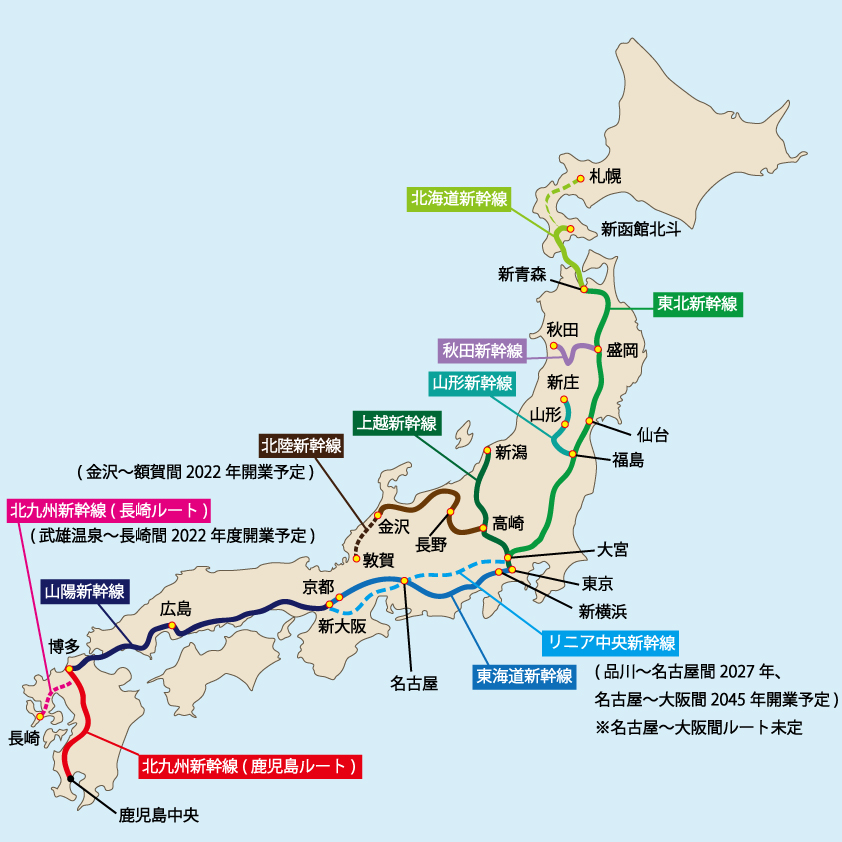
There are several lines on the shinkansen: the Hokkaido shinkansen (light green), the Tohoku shinkansen (green), the Joetsu shinkansen (dark green), the Tokaido shinkansen (blue), the Hokuriku shinkansen (brown), the Sanyo shinkansen (indigo), and the Kyushu shinkansen (red). There are also different types. For example, the Tokaido shinkansen and the Sanyo shinkansen have three types: the Nozomi, the Hikari, and the Kodama. The picture below shows the Nozomi.
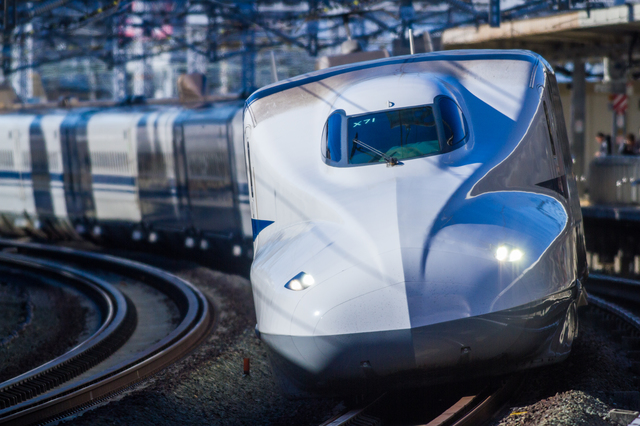
Get your tickets!
Where to get your tickets.
.jpg)
JR stations have ticket offices called the Midori no Madoguchi. You can go there to get tickets. There is also a website that you can visit: www.jreast.co.jp
Ticket system
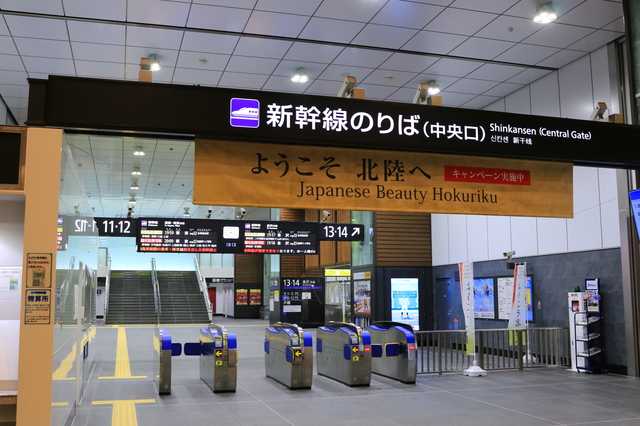
The ticket system of the shinkansen is a bit complex. Two tickets are necessary to take the shinkansen service: a basic fare ticket and an express ticket. A basic fare ticket is necessary for all train travel, and an express ticket is additionally needed to take the shinkansen. There are cases where the two tickets are integrated into one ticket.
To get onto the train, you need to pass through the automatic ticket gates for the shinkansen. The two tickets need to be inserted together when passing the gate. The tickets are stamped and released at the end by the ticket gate automatically, so don't forget to grab them! Sometimes JR employees walk around and check the tickets during travel.
There are three kinds of shinkansen seats: unreserved seats, reserved seats, and green seats (first-class seats). Unreserved seats are the cheapest, but it's recommended to get reserved seats. It is possible that you might not be able to find enough vacant seats and will have to sit separately if the shinkansen is crowded. During the high season, there is even a possibility that you might not find any vacant seats and have to keep standing through the shinkansen travel. Reserved seats free you from that sort of concern. If you want to enjoy luxurious travel, then purchase green seats tickets. They cost much higher than ordinary reserved seats, but offer a more comfortable trip.
For more detailed information, please see: www.jreast.co.jp
How to select seats and spend time in the shinkansen cars
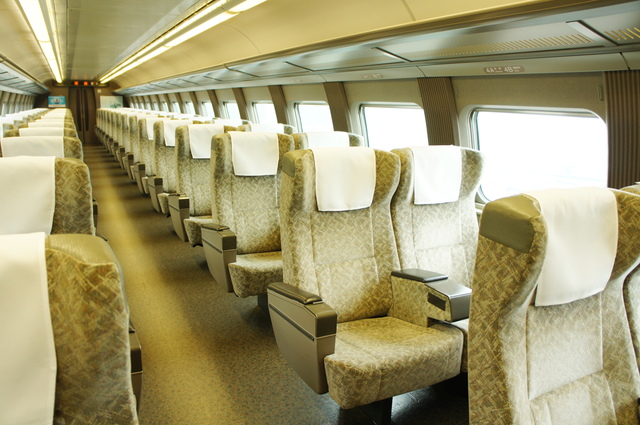
The arrangement of unreserved cars and reserved cars differs according to the type of the shinkansen. Most shinkansen trains have their unreserved seats cars in the cars No.1 to No.3, but some trains have them in the cars No.1 to No.5, and some trains have more.
If you'd like to use an electronic device but it needs to be charged, try to select window seats. On most shinkansen, the electrical outlets are set only in the window seats. Some shinkansen trains have WiFi, but the communication capacity is still slow and you should not expect too much. Some shinkansen stations also have WiFi for travelers from abroad. JR-Central_FREE, JR-EAST_FREE_Wi-Fi, and JR-WEST_FREE_Wi-Fi are available by registering your email address.
If you want to smoke or make a telephone call, you need to move to the decks between the cars so that you will not bother others. Some decks have rooms for smokers or ashtrays. You are not allowed to smoke in the toilets.
Japan Rail Pass
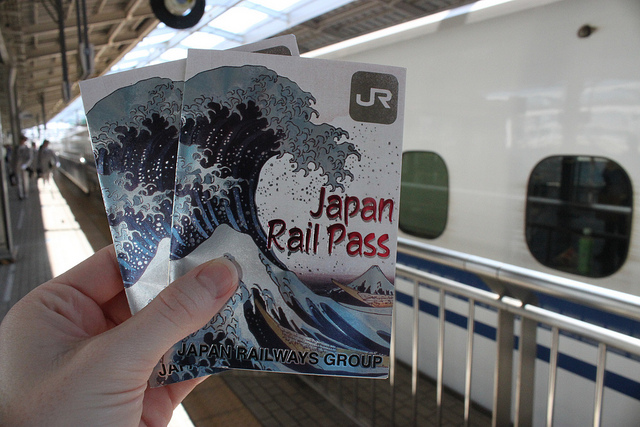
For those who visit Japan from abroad, the Japan Rail Pass is very convenient and economical. With Japan Rail Pass, you can take all the JR trains, including local trains, the shinkansen, and other special trains. It is offered at a reasonable cost: 29,110 yen for seven days, 46,390 yen for 14 days, and 59,350 yen for 21 days. You can purchase the Japan Rail Pass online, but it can only be done outside of Japan.
Japan Rail Pass HP: www.japan-rail-pass.com
Other shinkansen services
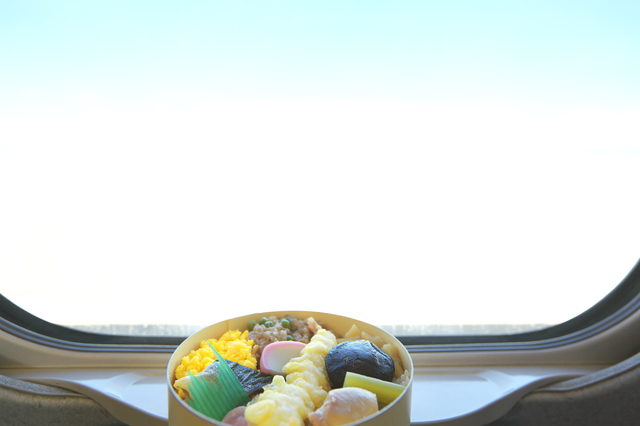
An ekiben is a lunchbox for train travelers, created and served at train stations. Some major stations make ekiben using regional specialties. For example, Sapporo Station in Hokkaido is famous for its fresh seafood, so their ekiben often includes salmon. You can buy ekiben on the shinkansen during travel as well as in the station. Go to the station a little earlier to enjoy shopping for ekiben!
Toilets, garbage cans, luggage storage
Toilets, garbage cans, and luggage storage are available in the front and back of the shinkansen cars. The luggage storage is for large baggage such as skis, snowboards, and surfboards. Luggage racks are also set above each seats.
Appendix: the seats rotate!
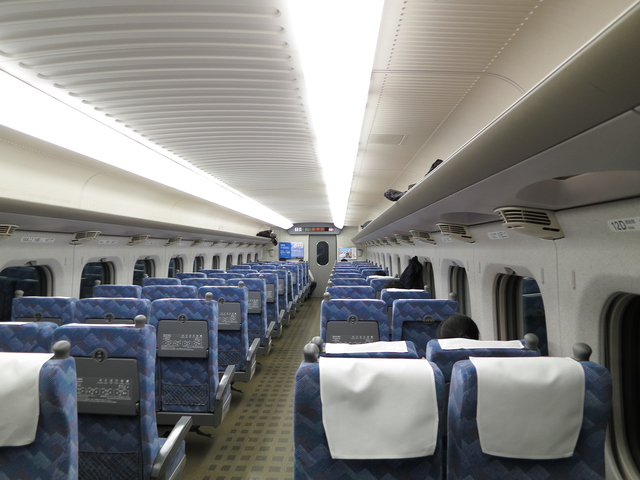
The seats of the shinkansen are designed to rotate so that you and your group can enjoy traveling together. Keep in mind to not make too much noise, as there are other passengers around. Hope you enjoy your travel through Japan on the shinkansen!
Appendix 2: Doctor Yellow

This yellow shinkansen train is a special train for inspecting the deformations of the rails, overhead wiring and signal current of the shinkansen. It is an unsung hero supporting the safety of the shinkansen in secret, and is nicknamed "Doctor Yellow."
Doctor Yellow runs only about every ten days, and its timetable is not open to public. It is said that you will be happy if you are lucky enough to see Doctor Yellow. Try your luck by looking for the yellow shinkansen train while you are traveling!
Also Check:
3 secrets behind the wonders of the shinkansen (japanese bullet train), what you should know about the jr pass while traveling in japan.
The information in this article is accurate at the time of publication.
tsunagu Japan Newsletter
Subscribe to our free newsletter and we'll show you the best Japan has to offer!

- transportation
About the author
Related Articles
Related interests.
- Cars & car rental
- Coin lockers & luggage storage
- Accessibility
- Trains & stations
- Travel passes
Restaurant Search
Subscribe to the tsunagu Japan Newsletter
Sign up to our free newsletter to discover the best Japan has to offer.
Connect with Japan through tsunagu Japan
Let us introduce you to the best of Japan through our free newsletter: sightseeing spots, delicious food, deep culture, best places to stay, and more!
Everything you need to know about Japan’s bullet trains
Book your individual trip , stress-free with local travel experts
Select Month
- roughguides.com
- japan-bullet-trains-shinkansen
Plan your tailor-made trip with a local expert
Book securely with money-back guarantee
Travel stress-free with local assistance and 24/7 support

written by Rebecca Hallett
updated 08.04.2024
Surely one of Japan ’s most iconic images is an impossibly fast bullet train (or “shinkansen”) speeding past snow-capped Mount Fuji – you know the photo. Clichéd as it is, it captures that most Japanese of phenomena, the seamless blending of the ancient and the modern.
So, how are bullet trains any different to regular trains?
Where can i go on the bullet train, and where can’t i go, how much does it cost.
- What's this JR Pass I keep hearing about?
How do I get tickets?
Are there any rules or manners i need to remember, anything else i should bear in mind, what’s the future of the bullet train.
Beautiful views aside, the bullet train really is one of those must-do Japanese experiences. It can feel a bit daunting to try and figure out how to use it, but don’t worry – we’ve got a few tips on how to get the most out of Japan's bullet trains.
Travel ideas for Japan, created by local experts

Small Group Tour: Splendours of Japan
Discover the allure of Japan on our small group tour (max 16 guests). Unveil Tokyo, Kanazawa, Kyoto, Osaka, and Okayama through guided explorations. Immerse in tea ceremonies and relish in the captivating beauty of these iconic destinations. Regular departures ensure an unforgettable journey.

Small Group Tour: Secrets of Japan
Embark on an exceptional small-group tour, available monthly, unveiling Tokyo, Hakone, Hiroshima, Osaka, Kyoto, and beyond. Uncover Japan's hidden gems, from serene shrines to bustling cities, and immerse in enchanting forests.

Small Group Tour: Highlights of Japan
Exciting small-group tour with monthly departures. Immerse in Japanese culture, challenge a pro in a sumo suit, wander Arashiyama's bamboo groves in Kyoto, and relish a kaiseki feast with Maiko entertainment - all included in this fascinating small group tour.

Japan highlights: Tokyo to Osaka
From Tokyo to Osaka, this Japan trip features fantastic experiences. View a sumo session, visit ancient temples, and climb the Tokyo Skytree tower. Explore the resort town of Hakone in Mt Fuji’s shadow, savor a tea ceremony in Kyoto, and see cherry blossoms, in season, to complete a wonderful trip.

Self-Guided Adventure Tour in Japan
Immerse yourself in the breathtaking natural beauty, history, enchanting culture and warmhearted people of Japan, with our self-guided tour of Japan. Walk-through a bamboo forest, see how sake is made, join Samurai lesson, go bar-hopping in Tokyo and Osaka and extend your journey to Hiroshima

Culinary tour across Japan
This trip takes you from Tokyo to Kyoto, where you will experience authentic Japanese foods, visit morning markets in the local cities, learn how to make Japanese food and enjoy a unique stay at a monastery. A once in a lifetime experience.
They’re fast. As in, really fast. The Tōkaidō line between Tokyo and Kyoto takes between about two and a half hours (Nozomi or Hikari bullet trains) and four hours (Kodama bullet trains); by bus this takes about eight hours, and if you go by local trains it’s closer to nine.
Bullet trains also have plenty of “why don’t all trains have this” features, like seats which you can turn around (to make space for your luggage, or sit in a group with your friends), and they look pretty space age.
If you have planned a shinkansen ride from Tokyo, take care of a place to stay in Tokyo and enjoy exploring the city.
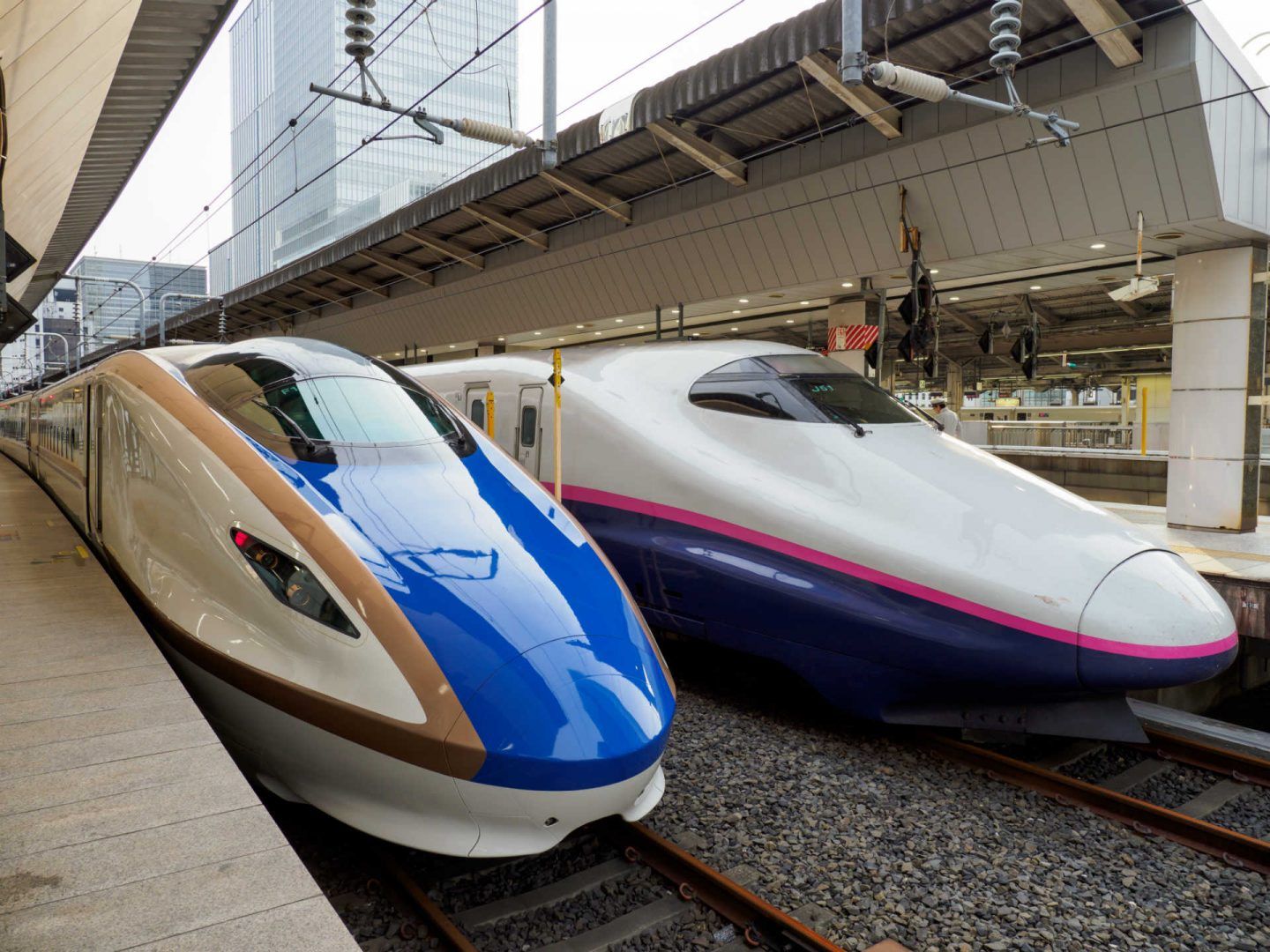
© kawamura_lucy/Shutterstock
The bullet train lines snake across most of the country, from Kagoshima at the southern tip of Kyūshū to Hakodate on the northern island of Hokkaidō. Most of the big tourist sites have a station nearby, so you can easily take one to see the ancient temples of Kyoto, Hiroshima’s Peace Park, or of course Tokyo.
The big gaps at the moment are in Shikoku (the fourth-largest island, just by Kyūshū) and almost all of Hokkaidō ; if you want to explore the far north of the country, you’re probably better off flying to Sapporo and continuing from there.
Unsurprisingly, riding a bullet train isn’t cheap. You pay a base fare for your journey, depending on distance and time, plus a bullet train supplement.
You’ll pay extra for a seat reservation (reserved seats are called shiteiseki ; non-reserved are jiyūseki ), and a whole lot extra if you want to go in the Green Car (first class).
Overall, an average Tokyo to Kyoto fare – one-way, regular class – would be about 13,000–14,000¥ (around US$140).
Facing difficulties when planning your trip to Japan? Our detailed plan answers all the questions you need to consider to make your trip go smoothly.

© CHEN MIN CHUN/Shutterstock
Related articles from the blog

What's this JR Pass I keep hearing about?
If you plan on using bullet trains quite a lot on your trip, it’s worth considering a JR Pass . You can get one for the whole country (starting at 29,110¥ for adults), or a cheaper pass only covering part of the network; the newest one is the JR East–South Hokkaidō Pass (26,000¥ for an adult). You can’t use the very fastest trains (Nozomi and Mizuho ones) with JR Passes, but the others are still ridiculously quick.
There are a few other money-saving options, too. Perhaps the most useful is the Puratto Kodama Economy Plan , which gives you reduced-price tickets on the Tōkaidō line (Ōsaka–Tokyo). For instance, you can buy a ticket from Tokyo to Kyoto for 10,100¥, when a regular fare would set you back 13,600¥.
If you’ve got a JR Pass, you won’t need to buy tickets at all – you can just walk onto the platform, head for the non-reserved carriage, and you’re off. You might want to get a seat reservation, though, which you can do at JR-affiliated travel agencies, at midori no madoguchi (“green window”) ticket offices, on ticket vending machines or through Japan Rail websites.
If you don’t have a pass, you’ll need to buy a ticket. You can buy these from the same places as the seat reservations, and can reserve a seat at the same time if you’d like. It’s worth looking up routes and prices ahead of time – Hyperdia is a useful site.
Thankfully, it’s all pretty straightforward. Head to the platform and line up by the door which matches your seat reservation. Wait for everyone to get off before you get on; at some stations, cleaning staff will board before you, and you should wait for them to finish up before getting on.
Continue your exploration of Japan with our practical tips on what you need to know before travelling to the country .
The Rough Guides to Japan and related travel guides
In-depth, easy-to-use travel guides filled with expert advice.

On the train just be generally mindful of the other passengers, and you shouldn’t go too far wrong. Oh, and don’t expect even a thirty second grace period if you’re running late: Japanese trains are ruthlessly punctual.

© 56Photo/Shutterstock
Don’t miss out on the institution that is the ekiben , or “railway meal” – you can buy them in stations or on the train, and they put other countries’ soggy sandwiches and slightly crushed bags of crisps to shame. Expect perfectly prepared meat and fish, vegetables cut into cute shapes, local ingredients and flavours, and maybe even a mini bottle of wine.
Do ask about which seats have the best views when booking; the most famous is of course the view of Fuji-san when heading from Tokyo to Kyoto or Ōsaka, which you’ll get if you sit on the right-hand side (ask for a yama-gawa or “mountain side” seat).
Hopefully more trains, going further and faster. The Hokuriku line (currently Nagano–Kanazawa) should be extended to Tsuruga by 2022; the world’s longest and deepest undersea tunnel was built from Aomori to Hakodate in 2016, and the line should reach Sapporo by 2030; and the network in Kyūshū will have a Nagasaki service in 2023. This does still leave Shikoku shinkansen-free, though, and the vast majority of Hokkaidō.
Because apparently 275mph isn’t fast enough, new Maglev trains with current top test speeds of 375mph are going to be in use in the not-so-distant future. The name comes from “magnetic levitation”, and yes, they are real life hover trains. They will be wheeled out (pun intended) on a new line between Tokyo and Nagoya by 2027, continuing to Ōsaka by 2045.
A final note for anyone slightly concerned at the thought of travelling so fast: since starting in 1964, the whole bullet train network has had a total of zero fatalities due to crashes or derailments. Yes, you read that right – zero.
Rebecca flew between London and Tokyo with Finnair . If you want to do some research before you go, try checking your nearest JNTO office, and explore more of Japan with The Rough Guide to Japan . Compare flights , book hostels and hotels for your trip, and don’t forget to purchase travel insurance before you go.
Top image © Natee Meepian/Shutterstock
- Travel Tips
Planning your own trip? Prepare for your trip
Use Rough Guides' trusted partners for great rates
Travel advice for Japan
From travel safety to visa requirements, discover the best tips for traveling to Japan
- Culture and Etiquette in Japan
- Eating and drinking in Japan
- How to get to Japan
- Getting around Japan: Transportation Tips
- Shopping tips for Japan
- Travel Tips Japan for planning and on the go
- When's the best time to visit Japan?
Find even more inspiration for 31 here
Ready to travel and discover japan, get support from our local experts for stress-free planning & worry-free travels.
- Where to stay
- Itineraries
- Travel advice
- Haneda Airport
- Okachimachi
- Shimokitazawa
- Kiso Valley
- Nozawa Onsen
- Shinanomachi
- Kumano Kodo
- Japan Journeys Style
- Things to do
- Restaurants
- Hiking and Walking
- Amusement Parks
- Animal Attractions
- Museums and Digital Art
- Parks and Gardens
- Sports and Stadiums
- Temples and Shrines
- Experiences
- Places to stay

- Destinations
- Things To Do
How to Ride the Bullet Train in Japan
Riding the bullet train (also known as Shinkansen) is easily the most convenient way to travel between cities in Japan. It’s fast, it’s comfortable, and you don’t have to deal with the stress of the airport or a long drive. It’s made even easier for tourists who can use the JR Railpass to save money while travelling around Japan. With over 800 trains travelling a day, at over 200km an hour, you won’t struggle to get where you need to go. Find out everything you need to know about using the bullet train, how to book your tickets, and using the JR rail pass.
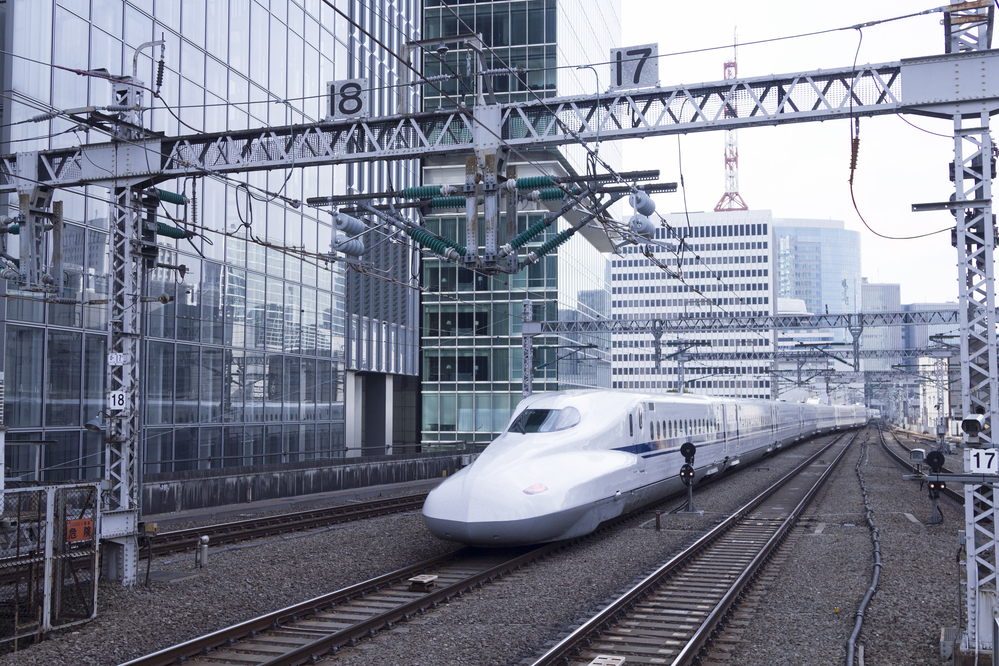
Where does the bullet train go?
The Shinkansen network covers most of the country with nine lines in total. One of the most popular routes for tourists is the line that travels south from Tokyo to Kagoshima which will take you through most of the major tourist destinations. This southern route is divided into three major lines:
The Tokaido line – The most popular and oldest line, its route travels Tokyo – Nagoya – Kyoto – Osaka .
The San’yo line – Traveling from Osaka to Fukuoka. Its route takes you through major destinations like Shin-Osaka – Himeji – Fukuyama – Hiroshima – Hakata.
The Kyushu line – This line will take you between the cities of Fukuoka and Kagoshima in Kyushu.
The other six lines will either take you north or inland from Tokyo including: the Akita, Hokkaido , Hokuriku, Joetsu, Tokoku, and Yamagata Shinkansen lines.
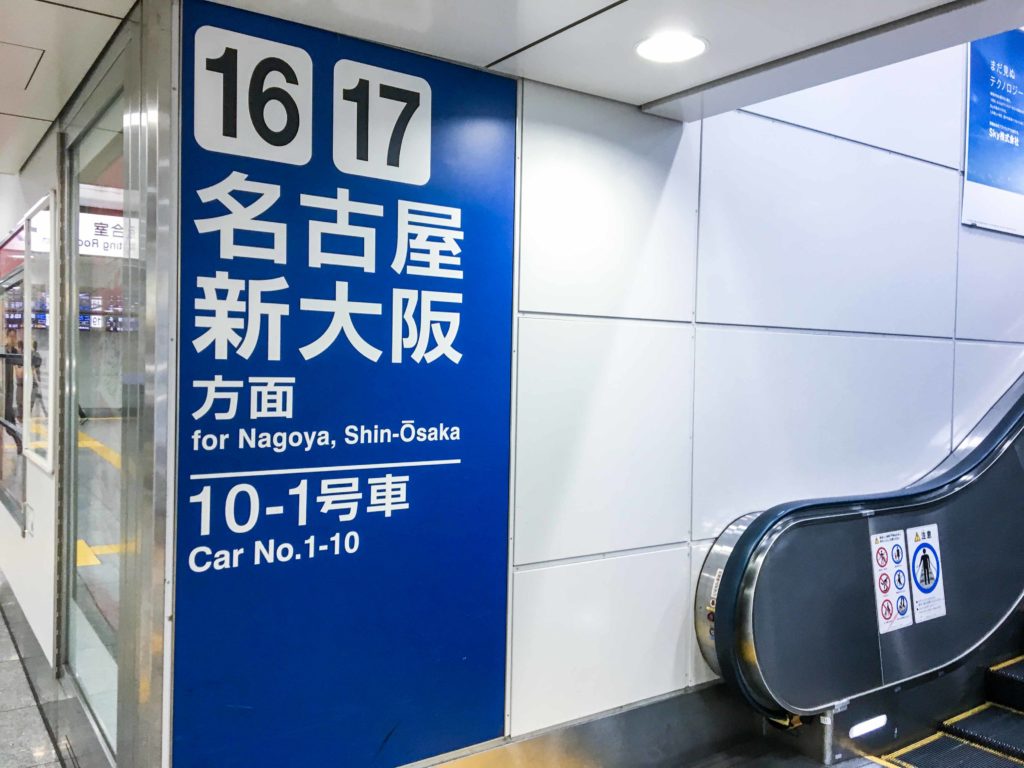
Booking your tickets – what train do you need?
Make sure to download the Hyperdia app on your phone which will give you access to all of the train timetables around the country (including the subway). This will provide up to date times to help you keep on schedule.
The easiest way to book your tickets is by buying them at the desk or at the ticket machines in the stations. The screens have an English option and there’s always someone nearby to help you out. However, if you’re able to, we would advise booking at least three days in advance (or earlier if it’s a public holiday) as trains can sell out. You can book your tickets online and pick them up at the designated spot using websites like:
smart Ex – for the Tokaido and Sanyo bullet train covering Tokyo , Mt. Fuji (Shizuoka), Nagoya, Kyoto , Osaka , Hiroshima and more.
JR East Reservation System – this covers the Tohoku, Akita, Yamagata, Hokkaido , Joetsu and Hokuriku Shinkansen.
JR West Reservation System – Similarly to smart Ex covers the Tokaido, Sanyo, Kyushu, Hokuriku and Joetsu Shinkansen.
Alternatively, you can book and have your tickets posted to your hotel using sites like Voyagin .
You’ll need to know:
- Your date of travel
- Number of people traveling
- What class you wish to travel in—ordinary or green car. (Green car is the bullet train equivalent of first class. Seats will be reserved, more luxurious and spacious and there is less crowding. From Tokyo to Kyoto, as an example, the green car will cost you 7980 yen on top of the standard 9880 yen.)
- Departure and arrival station
- Whether you want a reserved seat or not. (This is particularly important during peak hours and bank holidays, as seats fill up quickly. Reserved seat carriages tend to be quieter and your ticket guarantees you your seat. This can cost 320, 520 or 720 yen extra. Unreserved carriages sell more tickets than seats, so you may end up standing.)
Getting through the Ticket Gate
Luckily, there’s no wrong gate to enter. If you’re transferring from the subway, you’ll have two gates to go through: the first one ends your subway journey, and the next gate begins your Shinkansen journey.
If you’re simply arriving at the station on foot or by road, then it’s just the one set of gates to the Shinkansen tracks. This will give you access to all of the trains going north and south.
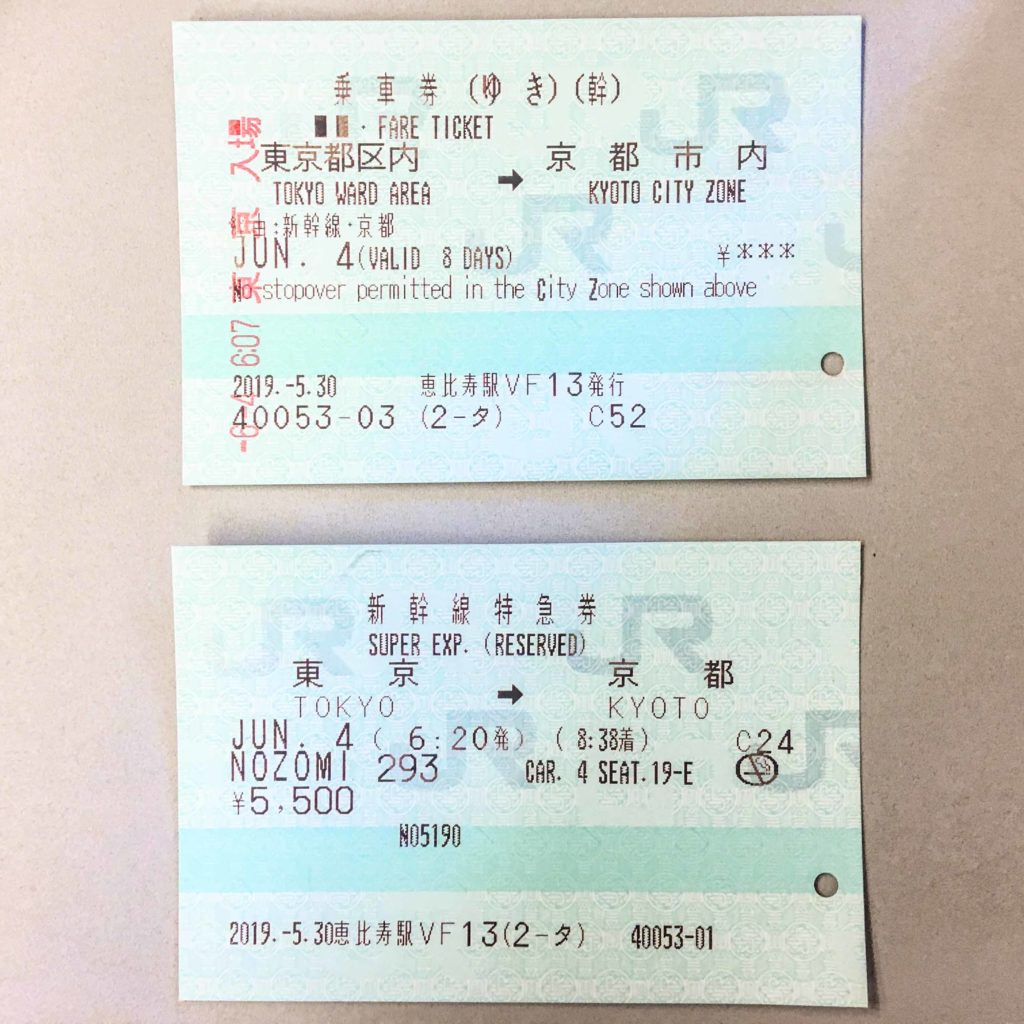
Note that you’ll need two tickets to ride the Shinkansen, a standard fare ticket required for all train travel and an express ticket. These are occasionally condensed into one ticket. You’ll need to put both tickets through the ticket machine at the gate at the same time. Your tickets will be stamped and fed back out to you so don’t forget to take them.
On the platform, each Shinkansen line will have express, semi express and local trains passing through. They all have a different name (like Kodama and Nozomi) so make sure you catch the train that will get you to where you need to go corresponding with your ticket. There are displays noting each train before they arrive and people on the platform who can help.
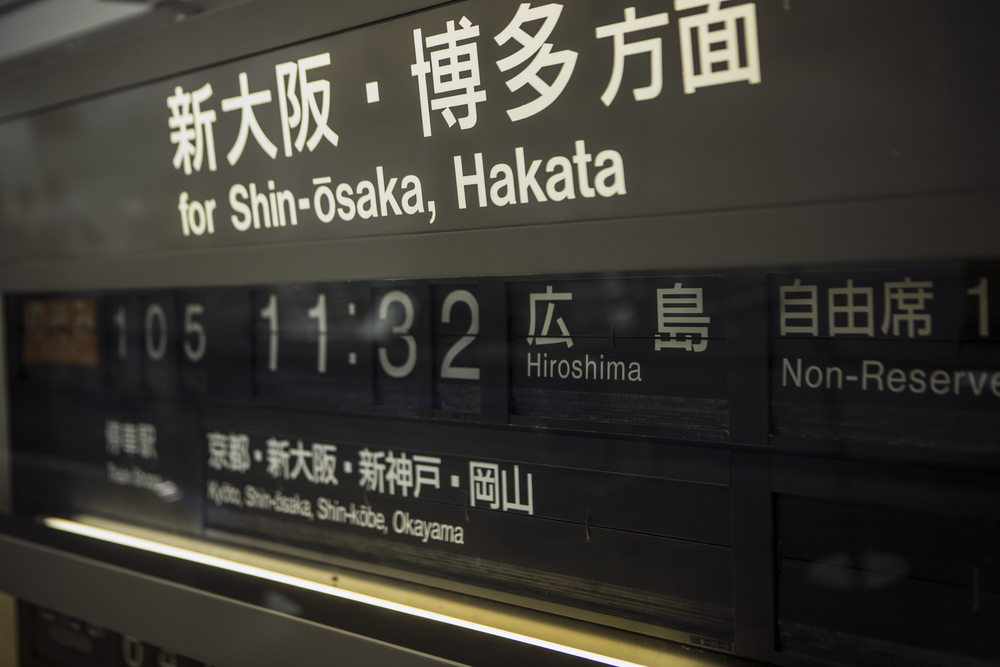
Using the JR Rail Pass on the Bullet Train
If you’re travelling on a tourist visa in Japan, you can save money with the Japan Railpass. This grants you access to all of the bullet trains except the Nozomi and Mizuho Shinkansen, which run on the Tokaido, Sanyo, and Kyushu Shinkansen lines. These are the fastest express trains and require a fee. A good alternative is the Hikari train which stops at 1 to 4 train stations more than the Nozomi, or the Kodama which will stop at all stations. You’ll also be able to prebook seats when using the JR Rail Pass which makes things more convenient, especially if you have luggage.
Tip : You’ll also be able to use your JR Rail Pass on the Tokyo Monorail and JR Lines such as the Yamanote circular line.
Shinkansen Etiquette & Useful Information
- While eating on most public transport in Japan is frowned upon, you can absolutely take snacks and drinks with you on the bullet train. In fact, most stations will stock bento boxes (called ekiben) specifically for this reason. Also, a cart with snacks and drinks will usually come around if you need a quick snack.
- Two pieces of luggage can be taken on board at no extra charge, up to 60kg.
- Small animals can be carried on board as long as they’re safely locked in a cage and weigh less than 10kg.
- You can take your bike on board as long as it’s foldable or you remove the front wheel. Bikes also have to be stored in a bike bag.
- Wifi has slowly being rolled out across the bullet trains and now most trains have free wifi available.
- There are toilets available onboard.
Post by Japan Journeys .
RELATED ARTICLES MORE FROM AUTHOR
Tips for catching the train or bus in tokyo, our guide to how to catch the tram in nagasaki, 10 things you wish you knew before coming to japan, recent posts, fukuoka city art museum: yes, that’s a real basquiat, sakurajima: a casual stroll around japan’s most active volcano, the mystical itsukushima jinja: miyajima’s unesco listed floating shrine, follow arashiyama’s kimono forest to a relaxing foot bath, noto peninsula drive, a day trip from kanazawa, avast ye climb aboard hakone’s pirate ships (a.k.a the hakone sightseeing..., things to do in yunomine onsen.
TOKYO TO OSAKA TRAIN
Tokyo to osaka bullet train facts, tokyo to osaka shinkansen.
Considered to be among the fastest trains in the world, Nozomi offer an amazing Tokyo to Osaka bullet train travel experience. In addition, the train stations are located near the city centers which makes them conveniently accessible by public transport.
All Tokyo to Osaka Shinkansen bullet trains running between the cities boast several travel classes , fast travel times (Tokyo to Osaka train time is about 2.5 hours), and an extensive and convenient schedule with up to 32 daily departures.

Book Train Tickets from Tokyo to Osaka
What to know about tokyo - osaka shinkansen.
It's Japanese
All that's unique and interesting from Japan
All About the Japanese Shinkansen Bullet Train: Facts & 11 Types
Want to learn a bit about the Japanese Shinkansen Bullet Train? Like, how fast does it go? How many types of bullet trains are there?
You’ll learn all the basic Japanese bullet train facts here. We’ll talk about…
- Introduction to the Japanese Shinkansen Bullet train
- What One Can Expect on a Shinkansen
- Types of Shinkansen & Speeds
So, let’s jump in.
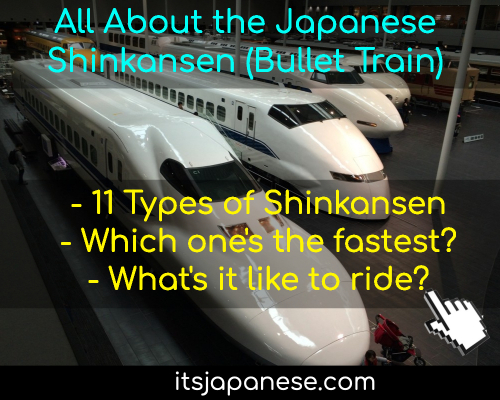
1) Introduction to the Shinkansen
First, what does “Shinkansen” ( (新幹線) mean? Shinkansen literally means “ ‘new main line.”
But just remember it as the bullet train.
The Japanese Shinkansen is an iconic part of a travel experience in Japan. It can easily transport passengers at high speeds all across the country. Compared to regular trains, they can get to places much faster and with a high level of comfort.
How fast? Up to 320 kilometers per hour or 198 miles per hour.
The first Shinkansen was built in Japan for the Tokyo Olympics of 1964. The Shinkansen was meant to be a way to connect the surrounding areas to Tokyo. Since then, Japan has been a leader in high-speed trains. Japan held the world record for most high-speed rail passengers until 2011, and currently has the third fastest train in the world.
Japanese bullet trains are used by a wide range of passengers from tourists, business people, to commuters. For foreigners, there is an attractive travel pass that can allow unlimited bullet train rides for one to three weeks.
Japanese Bullet Train Facts Recap
- First built in 1964
- Was built to give further areas easier access to Tokyo
- Can go up to 320 kmph
- Used by tourists, regular commuters and business people
2) What One Can Expect on a Japanese Bullet Train
What’s it like? It’s a lot like boarding a plane. And then having the plane go down the runway… faster and faster…. except without ever lifting off.
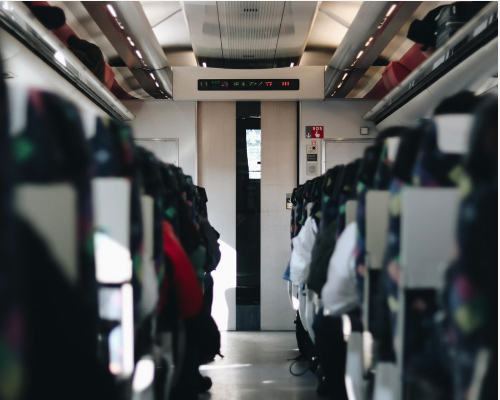
When you ride a Japanese bullet train, you’ll have a unique experience that’s different from local trains. Bullet trains are for long-distance travel, and they make sure that passengers are comfortable. You can expect to ride the train for up to several hours depending on where you’re going. However, they can be as short as 20+ minutes. For example, the ride from Tokyo (Shinagawa station) to Odawara City is about 25 minutes.
But anyways, what makes bullet trains different from all the other trains?
A) Bathrooms and seat comfort
Bullet trains will always have bathrooms that are similar in style to airline toilets. Seats are also designed for long distances. Although local trains in Japan are more like benches, the seats on bullet trains are forward-facing with armrests. There is also a small table that you can use from your seat. If you want a higher level of comfort, it’s possible to pay for different seat classes for more leg-room and comfier chairs.
B) Food onboard
In Japan, food is typically bought before boarding a Shinkansen. This is because there is usually no restaurant car in the high-speed trains. Every major train station will have a wide selection of Ekiben (station lunch boxes) that you can purchase before boarding. This is an important part of Japanese culture that many travelers look forward to. If you forget to buy food or get hungry during the journey, food carts also come around with food and drinks.
C) Train speed
Let’s talk about Japanese bullet train speed.
Bullet trains in Japan are typically around 300 kmph. Depending on whether the train makes more local stops, the speed of the train will be different. Top speeds are around 320 kmph.
D) Noise level
If you’re a passenger, the noise on the train is not too loud and you can expect a peaceful journey.
But, for the outside world… Because of such high speeds, the sound of the bullet train can be extremely loud for the surrounding areas. There have been noise complaints in the past for those living near the train tracks. Bullet trains are known to cause an effect called tunnel boom, which creates a huge sound when going through tunnels.
3) Types of Japanese Shinkansen Bullet Trains
The Kodama shinkansen runs on the major route between Tokyo and Osaka. It runs at a slower speed than the other shinkansen at around 285 kmph. Many passengers prefer Kodama over faster trains because it stops at some of the smaller cities.
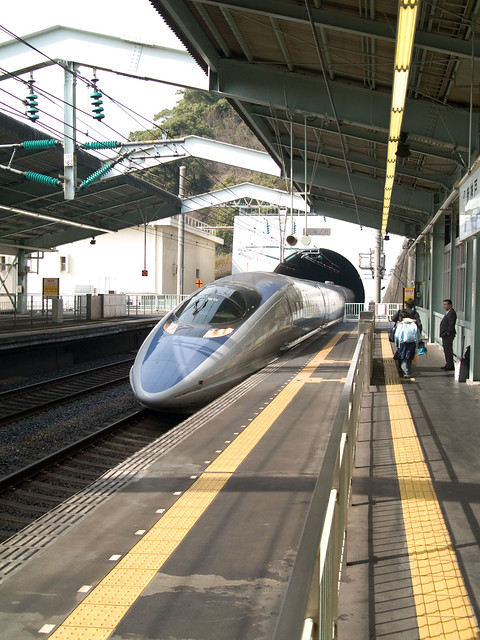
Reaching an impressive speed of 300 kmph, the Nozomi shinkansen runs on the line which goes between Tokyo and Osaka. It boasts a two hour travel time between these two cities.
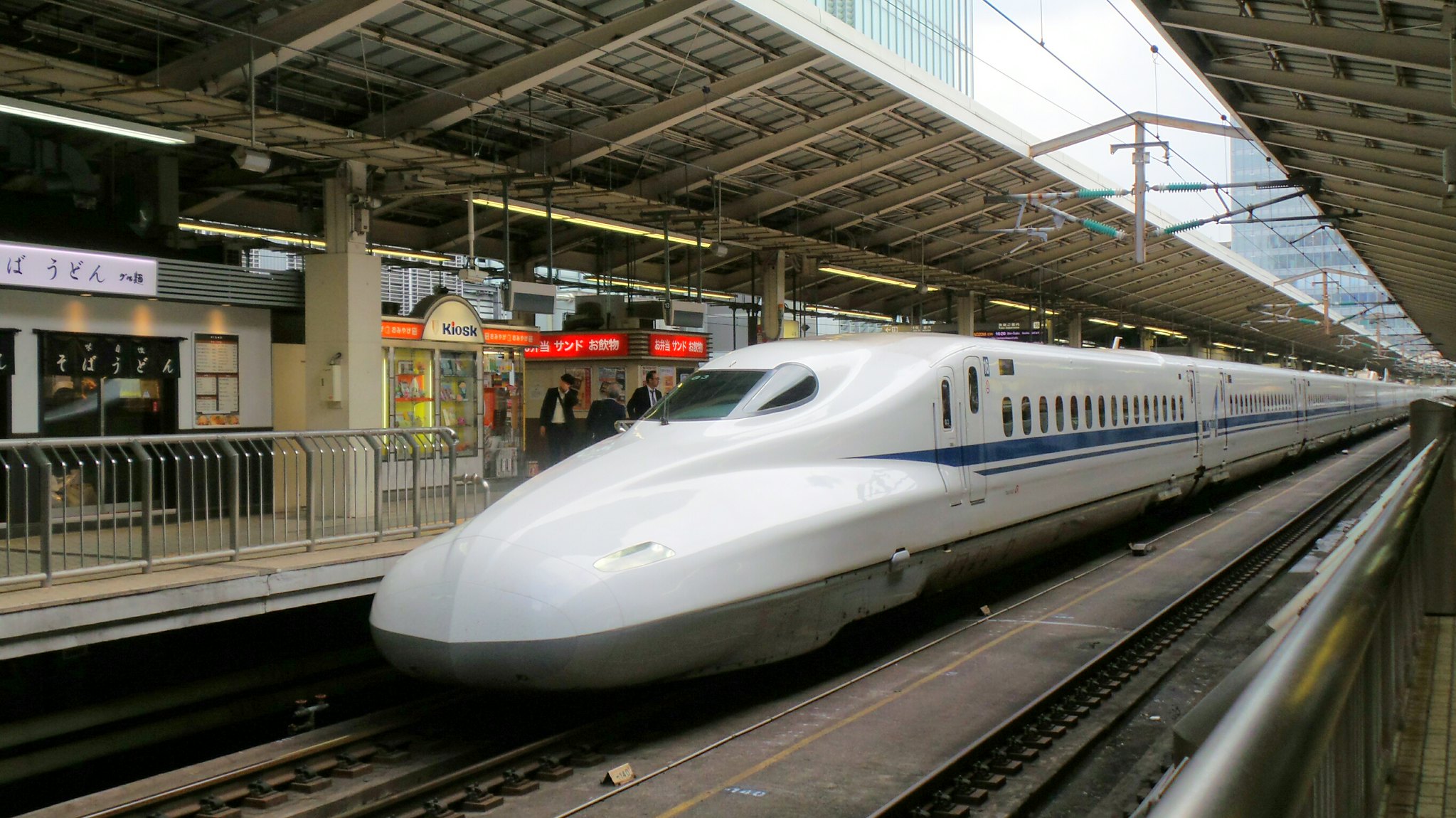
3) Hayabusa
This Shinkansen goes all the way from Tokyo to Hokkaido. It runs up to 320 kmph and it’s a great way to travel to the northern areas of Japan. Hayabusa means peregrine falcon in Japanese.
Yes, this is the fastest bullet train in Japan.

A slightly slower shinkansen, Toki runs at a speed of 240 kmph. It runs on the route from Tokyo to Niigata, which is on the western coast of Japan. Niigata is known for its ski resorts, hot springs, and national parks.

5) Kagayaki
The name Kagayaki means shine in Japanese and the Shinkansen runs at 260 kmph. This service started in 2015 and runs from Tokyo to Kanazawa in about two and a half hours.

This is a semi-fast Shinkansen running between Tokyo and Osaka. It is slightly slower than Nozomi but makes fewer stops than Kodama. The speed is about 285 kmph. For foreign tourists with a rail pass, it is the fastest train eligible to use with the pass. It takes close to three hours between Tokyo and Osaka.

Sakura is a shinkansen that goes from Osaka to Kagoshima. It runs at speeds of up to 300 kmph. It’s a great way to get to the southern parts of Japan.

8) Yamabiko
Running between Tokyo and Morioka, this semi-fast shinkansen is named after a mountain god. Morioka is a mountainous region with the ruins of the Morioka castle. Yamabiko’s speed is around 275 kmph.

9) Hakutaka
Hakutaka is a semi-fast Shinkansen operating on the line between Tokyo and Kanazawa. It is slightly slower than Kagayaki but makes more local stops. The running speed is about 260 kmph.

This is a Shinkansen that goes between Osaka and Kagoshima with speeds of 300 kmph. It runs similarly to the Sakura, but it is not covered by the rail pass used by many foreign tourists. It can get to Kagoshima slightly faster than Sakura, and frequently used by people traveling for business.

11) Tsubame
The Tsubame is a slower Shinkansen that makes all stops between Hakata and Kagoshima. It’s a good option for those looking to make local stops between the two stations. The Tsubame runs at around 260 kmph.

Conclusion — Over to You
Now you know a bit about the Japanese Shinkansen Bullet Trains — the types. the facts, and which one is the fastest.
Have you been on a Shinkansen before? Which one is your favorite?
And of course, if I’ve missed something in this article, leave me a comment and I’ll add it in.
– Team IJ
You might also like
What’s a japanese kei car & how’s it different.
wow, I loved the differnt types of trains I have never been on a Shinkansen but would love to!
Do the trans run on a magnetic field or rain tracks?
up to now, shinkansen have been running on train tracks.
You cannot copy content of this page
Osaka to Kyoto Train
Explore the most current information on trains from Osaka to Kyoto
Osaka to Kyoto Trains Information
Travel Time
Approximate
Ticket Cost:
Osaka to Kyoto Trains Schedule
Both Osaka and Kyoto are very popular tourist destinations in Japan, offering a lot to explore. For example, the city of Osaka boasts Universal Studio Japan and the eponymous castle, while charming Kyoto houses the bamboo forest Arashiyama and the famous Fushimi-Inari Taisha Shrine (among other brilliant must-visit sights). As the cities are located nearby, you can easily cross both of them from your travel bucket list during one trip to Japan!
Osaka to Kyoto Train Map
Traveling from Osaka to Kyoto is very easy, as they are connected via the high-speed Shinkansen. Osaka to Kyoto bullet trains are very fast and well equipped, they offer three travel classes and a broad departure schedule (you can find out more and book a train ticket from Osaka to Kyoto on Rail Ninja ), making the high-speed trains the best way to travel between the beautiful destinations.
Book Japanese Train Tickets
Q&a: travel from osaka to kyoto.
HOW FAR IS OSAKA FROM KYOTO BY TRAIN?
CAN I DO A DAY TRIP FROM OSAKA TO KYOTO?
HOW LATE DO TRAIN FROM OSAKA TO KYOTO RUN?
CAN I USE JR PASS TO TRAVEL FROM OSAKA TO KYOTO?
Yes, using JR Pass you are free to travel on some limited express trains and all basic-fare trains , but the legendary Shinkansen railway, unfortunately, is not covered by the pass.
Explore More of Japan
Kyoto to osaka train, tokyo to kyoto train, osaka to tokyo train, tokyo to nagoya train.
- Logout Login
- Adventure Holidays
- Weekend Getaways
- Driving Holidays
- Travel News
Top Searches
Iconic Road Trips Inida
Mpox Airport Alert
Himachal Pradesh Dehra Utsav
Germany Work Visa
European Romantic Getaways
Delhi Yamuna Water Alert
Underwater Bullet Train Tunnel Project in India: 10 facts that will leave you impressed
Times of India TIMESOFINDIA.COM / Created : Aug 20, 2024, 18:00 IST
You're Reading
The Mumbai-Ahmedabad High-Speed Rail Corridor will feature India’s first 21 km underwater tunnel. This project aims to revolutionize travel between Mumbai and Ahmedabad, using advanced tunnelling methods and large Tunnel Boring Ma … Read more
The Mumbai-Ahmedabad High-Speed Rail Corridor will feature India’s first 21 km underwater tunnel. This project aims to revolutionize travel between Mumbai and Ahmedabad, using advanced tunnelling methods and large Tunnel Boring Machines. The construction aims to balance engineering prowess with environmental protection and logistical considerations in densely populated areas. Read less
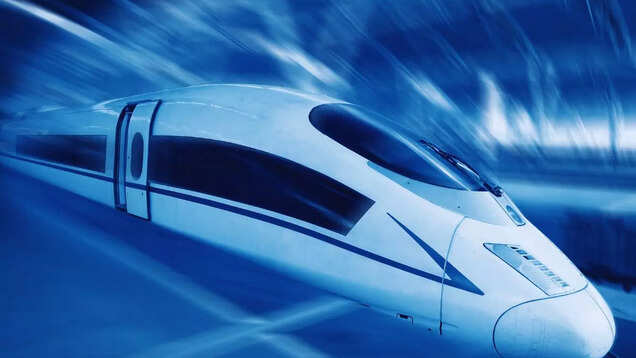
More from Travel News

Google’s top 10 summer-perfect destinations for 2024
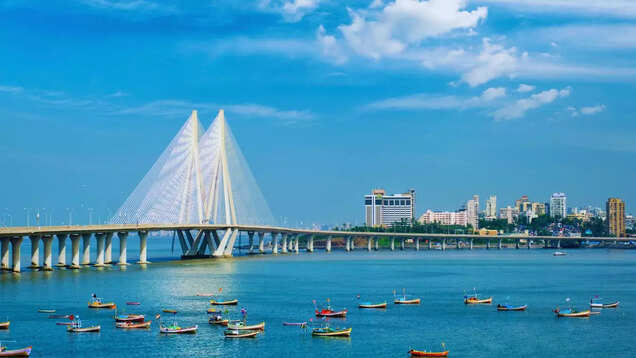
Comments (0)

Refrain from posting comments that are obscene, defamatory or inflammatory, and do not indulge in personal attacks, name calling or inciting hatred against any community. Help us delete comments that do not follow these guidelines by marking them offensive . Let's work together to keep the conversation civil.
Comments ( ) Sort: Newest UpVoted Oldest Discussed Down Voted closecomments

SIGN IN WITH
Or post without registration.

Visual Stories

Popular Galleries
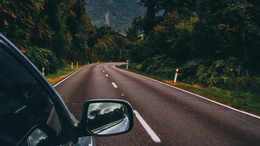
8 iconic road trips in India one must experience at least once in their life TRAVEL TRENDS , INDIA

World Photography Day: India’s most photogenic UNESCO World Heritage Sites TRAVEL TRENDS , INDIA

India's best backpacking destinations for adventure enthusiasts TRAVEL TRENDS , INDIA
Trending stories.
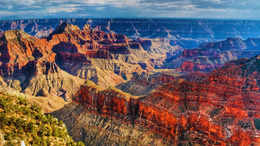
- What it’s like to visit the Grand Canyon: From iconic views to epic adventures

- From surfing to road trips: Hawaii’s ultimate adventure escapes

- Island hopping: 5 destinations you can’t miss in Europe

- Centuripe: The fascinating ‘Human-Shaped’ village in Italy

- Festival season airfare spike: Air travel costs increase for Diwali and Onam
- 1 Underwater Bullet Train Tunnel Project in India: 10 facts that will leave you impressed
- 2 Festival season airfare spike: Air travel costs increase for Diwali and Onam
- 3 Mpox outbreak: Indian airports, borders on high alert; officials to increase surveillance
- 4 Himachal Pradesh to host 'Dehra Utsav' to boost tourism and attract tourists
- 5 Mumbai’s new cultural gem: Discover Mount Mary’s immersive Biblical experience

THE DEFINITIVE GUIDE TO DESTINATIONS, ITINERARIES, THINGS TO DO, RESTAURANTS, NIGHTLIFE and LOTS MORE!
FOLLOW US ON
Places to visit.
- Places to visit in Bangalore
- Places to visit in Mumbai
- Places to visit in Delhi
- Places to visit in Goa
- Hotels in Goa
- Hotels in Jaipur
- Hotels in Shimla
- Hotels in Mumbai
Things To do
- Things to do in Goa
- Things to do in Mumbai
- Things to do in Bangalore
- Things to do in Delhi
Travel Inspiration
- Visa on arrival for Indians
- Honeymoon Places in india
- Hill Stations in India
- Weekend getaways in Mumbai
- Weather in Delhi
- Weather in Chennai
- Weather in Bangalore
- Weather in Mumbai
Best Beaches
- Goa Beaches
- Mumbai Beaches
- Pondicherry Beaches
- Kerala Beaches
- Restaurants in Bangalore
- Restaurants in Chennai
- Restaurants in Pune
- Restaurants in Jaipur
- Hill Station near Delhi
- Winter trip to Ladakh
- Places to visit in Kerala
- Winter Honeymoon Destinations
- UK visa guide for Indians
- Winter Trip to Manali
- Vaishno Devi Yatra
- Special Train Ticket Booking
- HP inter-state Bus
- Honeymoon Destinations India
Latest News
- From poaching to preservation: Kruger National Park’s non-stop fight to protect its wildlife
- From Provence to Colmar: A look at France’s most fairytale-like villages
- How to apply for Greece tourist visa: A step-by-step guide
- A safari with a purpose, where you can be a part in preserving Kenya's Maasai Mara
- Pamukkale: Visiting Türkiye's breathtaking thermal wonderland and UNESCO World Heritage site
- Singapore: Sentosa Island, perfect destination for fun with family
- Long weekend alert: Places to explore before August ends
- Mpox outbreak: Indian airports, borders on high alert; officials to increase surveillance
- 7 essential documents to keep handy for your Thailand trip
- 8 cheapest countries to visit that are often overlooked
- Japan’s 5 must-visit national parks for every wildlife enthusiast
Congratulations!
You have been successfully added to the mailing list of Times of India Travel. To complete the subscription process, kindly open your inbox and click on the confirmation link which has been emailed to you.
Share with friends
Thank You for sharing! Your friend will receive the article link on email mentioned.
- (For more than one recipient, type addresses separated by commas)
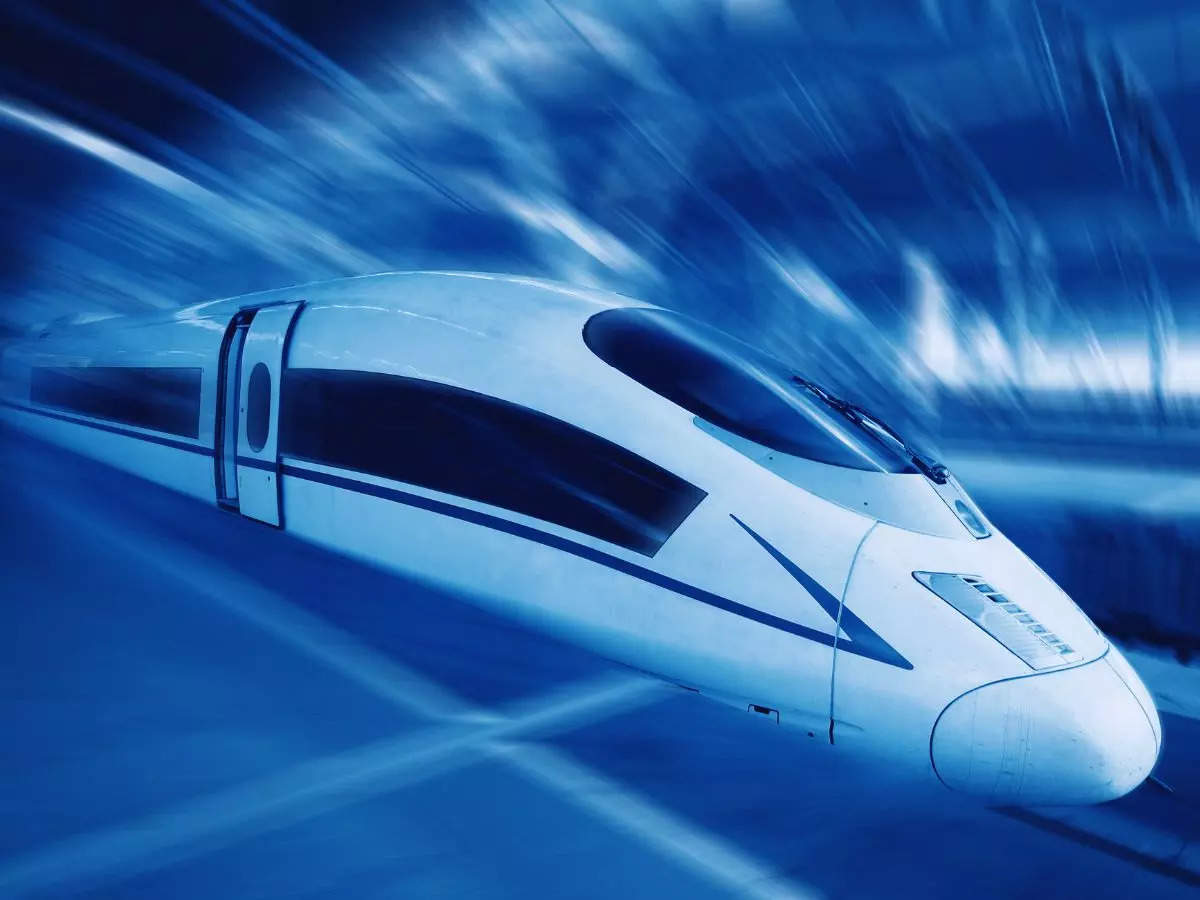
The Mumbai-Ahmedabad High-Speed Rail Corridor will feature India’s first 21 km underwater tunnel. This project aims to revolutionize travel between Mumbai and Ahmedabad, using advanced tunnelling meth...

$2499—Tour Japan: 15-night trip incl. bullet train

With this exclusive offer, explore seven cities across Japan next year and save $1500.
Why We Love This Deal
This comprehensive itinerary blends visits to Japan's sprawling metropolises with stops in charming towns off the beaten path. Over 15 nights, you'll step inside Tokyo's oldest temple, board a cruise with views of Mount Fuji, ride the bullet train and enjoy a traditional Japanese meal. Best of all, savings add up to $1500 for Travelzoo members.
What's included for $2499 per person:
- 15 nights in well-reviewed hotels, including one night in a traditional "onsen" hotel: Tokyo, Kawaguchiko, Kanazawa, Takayama, Kyoto, Osaka and Hiroshima
- Sightseeing tours with entry fees—visit the UNESCO Shirakawa-gō Village, Nara Deer Park, Osaka Castle, Miyajima Island and more
- Daily breakfast and two dinners
- Ground transfers and bullet train ride from Hiroshima to Osaka
- English-speaking tour guide
Note: Roundtrip international flights from eight U.S. airports can be added during the booking process, starting at +$899 per person.
When to go: Depart on select dates in April–June 2025. Departures during fall foliage season (October–November 2024) are also available.
Customize your trip: For an additional cost, experience a tea ceremony, make sushi, take a calligraphy class or go on a night tour of pubs, or "i zakayas," throughout Tokyo.
Additional itineraries: This deal is part of a larger Travelzoo members-only Japan sale , including a shorter 7-night trip and a small-group tour with 4-star accommodations.
When You Can Go
April–June 2025; fall dates also available
$1500 vs. regular price
More Deals & Tips
- Trending Deals
- Last-Minute Deals
Your location
Where are you.

Create an account.
Just one more thing..., check your inbox., create your password..
- Access to exclusive travel, entertainment, and lifestyle experiences
- Hand-picked offers, personally reviewed by our global team of deal experts, delivered to your inbox
- Dedicated club-member customer support
Sign in to your account.
Enter your password.
Please accept this confidentiality pledge:
I agree to maintain the strict confidentiality required to access Travelzoo’s confidential offers. I will not reveal details of these confidential offers publicly, which includes not posting about it on social media. I will not attempt to purchase a confidential offer for anyone else. I understand that violating these conditions can result in my access being revoked.
To view confidential offers, we require that you sign a confidentiality agreement.
Don’t know password?
You're all set, join travelzoo, sign in to unlock, don't miss out, our deal experts have negotiated member exclusive rates for people like you., and you’re in..
Welcome, Travelzoo Member . You now have access to confidential offers. To access Confidential Offers in the future, you can use the link from your email, or the link under My Account on the Travelzoo website. This page is only accessible to Confidential Offer members.
You now have access to all our deals.
Here are the details of the deal you were interested in.
Sign in to save and manage your deal alerts
Sign in to save this deal to favorites., already a member, not a member yet, save this deal to your favorites.

Mumbai-Ahmedabad Bullet Train Project: Completion Of Vatrak River Bridge Marks Major Milestone; Check Details Inside
I n a significant advancement for India's first high-speed rail project, the construction of the Vatrak River Bridge in Kheda district, Gujarat, has been successfully completed on 20 th August. "This bridge is a crucial component of the ambitious Mumbai-Ahmedabad Bullet Train project, aimed at revolutionizing intercity travel in the country" said an official.
"The newly completed bridge spans a length of 280 meters and is strategically positioned between the Anand and Ahmedabad bullet train stations, enhancing connectivity and reducing travel time between these major hubs. The structure comprises seven full-span girders, each measuring 40 meters, supported by eight robust circular piers ranging from 9 to 16 meters in height and 3.5 to 4 meters in diameter" he said.
"The completion of the Vatrak River Bridge is a testament to our commitment to delivering world-class infrastructure. This achievement brings us one step closer to realizing the dream of high-speed rail connectivity between Mumbai and Ahmedabad," said a senior official involved in the project.
The Vatrak River Bridge is the tenth out of the 24 planned river bridges for the bullet train corridor, highlighting the steady progress of the project. Previously, the Mohar River bridge between Anand and Ahmedabad stations was also completed, underscoring the consistent efforts in bridging critical waterways along the route.
Originating from the hills of Dungarpur in Rajasthan, the Vatrak River enters Gujarat near the village of Moydi in Meghraj taluka, flowing gracefully through the region before meeting the Sabarmati River. The bridge is situated approximately 25 kilometers from the Anand station and 30 kilometers from the Ahmedabad station, marking it as a pivotal link in the network.
"The Mumbai-Ahmedabad Bullet Train project is poised to transform transportation infrastructure by introducing cutting-edge technology and reducing travel time significantly between two of India's major cities. With the successful completion of key structures like the Vatrak River Bridge, the project continues to move forward with renewed vigor and dedication" said spokesperson of National High Speed Rail Corporation.
Details of the Vatrak River Bridge
Length: 280 meters
Consists of 7 Full Span Girders (40 meters each)
Height of Piers – 9 to 16 meters
08 circular piers of 3.5 meters and 4 meters diameter
This is the 10th river bridge out of 24 river bridges planned for Bullet Train project


IMAGES
COMMENTS
The world-renowned bullet train offers the highest rail speeds to match its peerless comfort, allowing travelers to travel around the country at regular intervals. ... While this service is suitably priced for super quick express train travel in unrivalled comfort, costs can be reduced by purchasing one of a variety of passes. ...
Japan's sleek Shinkansen bullet trains zoomed onto the railway scene in the 1960s, shrinking travel times and inspiring a global revolution in high-speed rail travel that continues to look to ...
The Japan Rail Pass gives you unlimited access to all Shinkansen high-speed trains. A supplement is required for travel on the Nozomi and Mizuho Shinkansen on the Tokaido, Sanyo and Kyushu Shinkansen lines. The Hikari, Kodama, and Sakura bullet trains are the fastest trains you can board using the Japan Rail Pass without a supplement.
The most traveled bullet train line in the country, the Tōkaidō Shinkansen connects Tokyo to Yokohama, Nagoya, Osaka, and Kyoto. The Sanyō Shinkansen connects Osaka (Shin-Osaka Station) with ...
Shinkansen - also known as the bullet train - are operated by Japan Railways (JR). Valued for its speed, accuracy on time, comfort, safety and efficiency, the shinkansen can run at speeds of up to 320 km/h, carrying thousands of people across Japan daily. This article will guide you through what you need to know about the shinkansen.
This is Shink 101, a comprehensive guide to taking some of the fastest trains in the world. It covers everything from bullet train speeds to seat reservations, with a few fun facts thrown in for good measure. Let's begin with the basics. Just looking for Shinkansen tickets? You can buy them on Klook and Rakuten Travel Experiences.
With a 20,000-kilometer network of lines and high-performance, punctual trains, Japan is a train lover's paradise. If you want to optimize your time in Japan and travel quickly between the Japanese cities, opt for the high-speed Shinkansen 'bullet trains'.. These Shinkansen bullet trains are a big hit with tourists in Japan as they are easy to access, convenient for long-distance travel, and ...
Shinkansen (新幹線) in Japanese means 'new trunk line' or 'new main line', but this word is used to describe both the railway lines the trains run on and the trains themselves. [11] In English, the trains are also known as the bullet train. The term bullet train (弾丸列車, dangan ressha) originates from 1939, and was the initial name given to the Shinkansen project in its earliest ...
Line Route Distance Top Speed Shortest Travel Time; Tōkaidō Shinkansen: Tokyo-Shin-Osaka: 552.6 km: 285 km/h: Tokyo-Nagoya: 1 h 33 m Tokyo-Shin-Osaka: 2 h 21 m
Gran Class lines and prices. The first trains with a Gran Class option began running on the Tohoku Shinkansen Line in 2011. The line covers Tokyo Station to Shin-Aomori Station near Hokkaido. The trip from Tokyo to Aomori City takes approximately three hours and costs ¥28,980 - ¥ 10,340 for the train fare, and an additional ¥ 18,640 to ...
Japan's main islands of Honshu, Kyushu and Hokkaido are served by a network of high speed train lines that connect Tokyo with most of the country's major cities.Japan's high speed trains (bullet trains) are called shinkansen (新幹線) and are operated by Japan Railways (JR).. Running at speeds of up to 320 km/h, the shinkansen is known for punctuality (most trains depart on time to the ...
The Shinkansen or Japanese bullet train was the world's first high-speed train, with its first service launched on October 1, 1964, linking Tokyo to Osaka. Today other countries have surpassed Japan in speed, but it is still among the top 5 fastest in the world. Operated by Japan Railways, Japan's largest railroad company, and from that ...
The shinkansen (bullet train) is the name of high-speed train in Japan. It is operated by the JR (Japan Railways) companies. The first shinkansen opened in 1964, when Tokyo held the Olympics. The shinkansen is well-known for its safety and punctuality. Since it is first opened in 1964, almost zero major accidents have occurred.
Unsurprisingly, riding a bullet train isn't cheap. You pay a base fare for your journey, depending on distance and time, plus a bullet train supplement. You'll pay extra for a seat reservation (reserved seats are called shiteiseki; non-reserved are jiyūseki), and a whole lot extra if you want to go in the Green Car (first class).
The Shinkansen, or "bullet train," is a Japanese icon. The first route was the Shinkansen from Tokyo to Osaka, completed ahead of the 1964 Tokyo Olympics, and named after the that linked east ...
And taking a bullet train is one of the best ways to see astonishing landscapes on the way to your destination. Enjoy a perfect travel experience onboard a modern Nozomi Tokyo to Kyoto bullet train. ... If you travel by train, the distance between the two cities is approximately 450 km (280 miles) and it takes about 2 hours and 15 minutes by ...
Tokyo to Kyoto Bullet Train. Tokyo Station outside and inside. From Tokyo, you can board the shinkansen from either Tokyo Station, or Shinagawa Station. Nozomi trains run every 10 minutes from 6 to 9 pm, while Hikari trains run every 30 minutes from 6:26 to 10 pm. A one-way journey with an unreserved seat costs the same on all 3 shinkansen ...
Your date of travel; Number of people traveling; What class you wish to travel in—ordinary or green car. (Green car is the bullet train equivalent of first class. Seats will be reserved, more luxurious and spacious and there is less crowding. From Tokyo to Kyoto, as an example, the green car will cost you 7980 yen on top of the standard 9880 ...
Japan has started testing its fastest-ever bullet train. The ALFA-X version of the high speed Shinkansen train is designed to be capable of reaching 400 kilometers per hour, or 249 mph.
Nozomi bullet train from Tokyo to Osaka is the fastest way to travel between two cities. The ride will take only 2 hours and 30 minutes down the Tokaido Shinkansen Line, carrying you from Tokyo Station to Shin-Osaka Station .
The magnetic bullet train will connect Tokyo and Osaka in 1 hour - over 600 KPH. Check the specs of the future trains in Japan. Twice as fast as Shinkansen! ... Once completed, the line will provide a more direct line between the two cities and will reduce travel time by around 50% (down to 40 minutes) in comparison to the current Tokaido ...
For foreigners, there is an attractive travel pass that can allow unlimited bullet train rides for one to three weeks. Japanese Bullet Train Facts Recap. First built in 1964; Was built to give further areas easier access to Tokyo; Can go up to 320 kmph; Used by tourists, regular commuters and business people; 2) What One Can Expect on a ...
Traveling from Osaka to Kyoto is very easy, as they are connected via the high-speed Shinkansen. Osaka to Kyoto bullet trains are very fast and well equipped, they offer three travel classes and a broad departure schedule (you can find out more and book a train ticket from Osaka to Kyoto on Rail Ninja), making the high-speed trains the best way to travel between the beautiful destinations.
Travel time: Once completed, the tunnel will allow the bullet train to reach speeds of up to 320 kilometers per hour, revolutionizing travel between Mumbai and Ahmedabad.
Ground transfers and bullet train ride from Hiroshima to Osaka; English-speaking tour guide; Note: Roundtrip international flights from eight U.S. airports can be added during the booking process, starting at +$899 per person. When to go: Depart on select dates in April-June 2025. Departures during fall foliage season (October-November 2024 ...
"The Mumbai-Ahmedabad Bullet Train project is poised to transform transportation infrastructure by introducing cutting-edge technology and reducing travel time significantly between two of India's ...
Bullet Train (Original Motion Picture Soundtrack) is the soundtrack album to the 2022 film of the same name.The album was released by Arista Records on August 3, 2022, featuring a collection of incorporated songs, mostly using Japanese music for the film to suit the film's setting in Japan. [1] Dominic Lewis composed the film score, having worked for nearly a year during the COVID-19 pandemic.